- Ebooks & Courses
- Practice Tests

How To Write an IELTS Process Diagram Essay
An IELTS process diagram question can contain a wide variety of different types of graphics. It could be a natural process such as the water cycle, a manufacturing process or a diagram of a system.
Using these 5 steps will help you to write a high-scoring process diagram essay:
1) Analyse the question
2) Identify the main features
3) Write an introduction
4) Write an overview
5) Write the details paragraphs
In this lesson, we’re going to work through the 5 stages step-by-step as we answer a practice question.
Before we begin, here’s a model essay structure that you can use as a guideline for all IELTS Academic Task 1 questions.
Ideally, your essay should have 4 paragraphs:
Paragraph 1 – Introduction
Paragraph 2 – Overview
Paragraph 3 – 1 st main feature
Paragraph 4 – 2 nd main feature
We now have everything we need to begin planning and writing our IELTS process diagram essay.
Here’s our practice question:
The diagrams below show a structure that is used to generate electricity from wave power.
Summarise the information by selecting and reporting the main features, and make comparisons where relevant.
Write at least 150 words.
Generating Electricity From The Sea
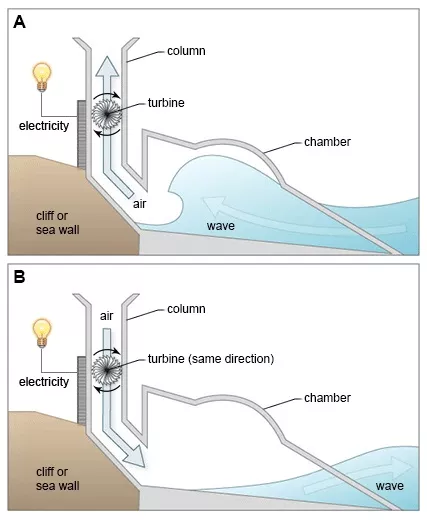
Source: Official website IELTS Essentials
Step 1 – Analyse the question
The format of every Academic Task 1 question is the same, with the instruction sentence (highlighted below) identical in every question. Here is our practice question again.
Every question consists of:
- Sentence 1 – A brief description of the graphic
- Sentence 2 – The instructions
- The graphic – diagram, chart, graph, table, etc.
Sentence 2 tells you what you have to do.
You must do 3 things:
1. Select the main features.
2. Write about the main features.
3. Compare the main features.
All three tasks refer to the ‘ main features ’ of the graphic. You do not have to write about everything. Just pick out 2 or 3 key features and you’ll have plenty to write about.
Step 2 – Identify the Main Features
The graphic in IELTS process diagram questions should not be difficult to understand. There are not usually any numbers to analyse as in other types of question, just a diagram to interpret or, as in our practice question, two diagrams which each show part of the process.
All you are looking for are the main features. These should be the easiest things to spot. There will be lots of information in the graphic to help you identify them, especially, titles, labels and captions.
Here are some useful questions to ask?
1) Is it a linear or a cyclical process?
A linear process starts and finishes at different places. It will often involve the manufacture or creation of something, starting with the raw materials going in at one end and the finished product coming out the other end. An example of this can be seen in this diagram from a past IELTS process diagram question about the manufacture of bricks.
Linear process
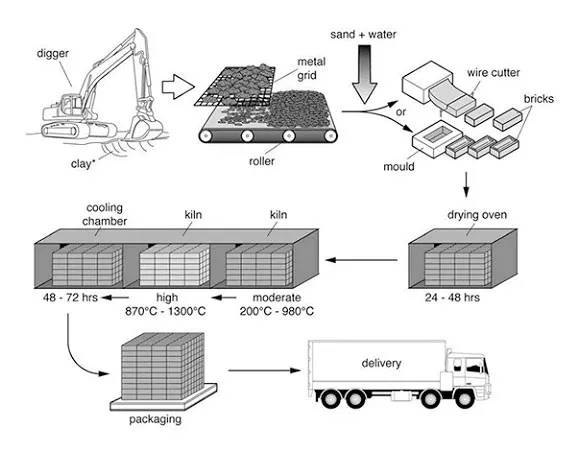
A cyclical process, on the other hand, is a process that goes back to the beginning and repeats over and over again, such as the life cycle of a frog or a butterfly.
Cyclical process
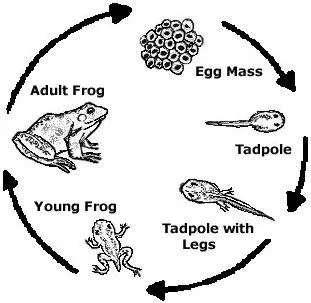
2) Where does the process start and end?
For a linear process this will usually be obvious. It may be harder to determine for a cyclical process so it’s important that you examine the graphic carefully to find out.
3) How many steps are there to the process?
If there are a lot, it can be helpful to number them from 1 to whatever number the final stage is.
4) Can the process be easily broken down into stages?
In the brick-making graphic, for example, there are three stages:
a) Creating the bricks from clay
b) Manufacturing the finished product by drying and firing
c) Packaging and delivery
In the life cycle graphic above, there are also three distinct stages as the frog passes through different stages of development – egg, juvenile, adult.
5) What are the raw materials? What is produced at the end of the process?
These questions obviously apply only to manufacturing processes.
For other types of process, it might be more appropriate to ask the following question.
6) What is the end result of the process?
This question is relevant for our practice IELTS process diagram question which shows a process that creates something using a particular structure. The end result is the production of electricity.
So, what main features stand out in our practice graphic? Here it is again.

This graphic doesn’t contain very much detail. There are only two stages to the process:
Stage 1: Electricity is generated as the wave flows into the structure (Diagram A).
Stage 2: Electricity is also created as the receding wave draws air back down the column (Diagram B).
Other diagrams are more complex and you have to go through them stage by stage to work out what’s happening and then pick out just 2 or 3 main feature to write about.
The key features you select will be the starting point for your essay. You will then go on to add more detail later. However, with just 20 minutes allowed for Task 1, and a requirement of only 150 words, you won't be able to include many details.
We’re now ready to begin writing our essay. Here’s a reminder of the 4 part structure we’re going to use.
Step 3 – Write an Introduction
In the introduction, you should simply paraphrase the question, that is, say the same thing in a different way. You can do this by using synonyms and changing the sentence structure. For example:
Introduction (Paragraph 1):
The two diagrams illustrate a method of creating electricity from the force of waves using a specifically designed man-made construction.
This is all you need to do for the introduction.
Step 4 – Write an Overview (Paragraph 2)
In the second paragraph, you should give a general description of the diagram/s or process. The detail comes later in the essay.
State the information simply using synonyms where possible. No elaborate vocabulary or grammar structures are required, just the appropriate words and correct verb tenses.
For example:
Overview (Paragraph 2):
The structure, consisting of a wave chamber and a tall column containing a turbine, is erected on a steeply sloping coastal cliff or sea wall where it is subject to the movement of the ocean waves.
Step 5 – Write the 1st Detail Paragraph
Paragraphs 3 and 4 of your IELTS process diagram essay are where you include more detailed information. In paragraph 3, you should explain the first key feature in more detail.
For this question, we will expand on the first stage of the process. Here it is again:
Stage 1: Electricity is generated as the wave flows into the structure (Diagram A).
And this is an example of what you could write:
Paragraph 3 :
The first diagram shows how the incoming wave fills a large chamber and forces the air inside this space up the column and through the turbine. The pressure of the air rotates the turbine which generates a current of electricity. The process does not end there for the structure is able to continue producing power as the sea recedes as can be seen in the second diagram.
Step 6 – Write the 2nd Detail Paragraph
For the fourth and final paragraph, you do the same thing for your remaining key features or, for this question, the second stage of the process.
Here it is again:
Stage 2: Electricity is also created as the receding wave draws air back down the column (Diagram B).
Here’s an example of what you could write:
Paragraph 4 :
As the water now flows away from the structure, it draws air back down the column and downwards through the turbine in the same direction as the previous upward flow of air. The turbine continues to turn thus generating even more electricity.
Here are the four paragraphs brought together to create our finished essay.
Finished IELTS Process Diagram Essay
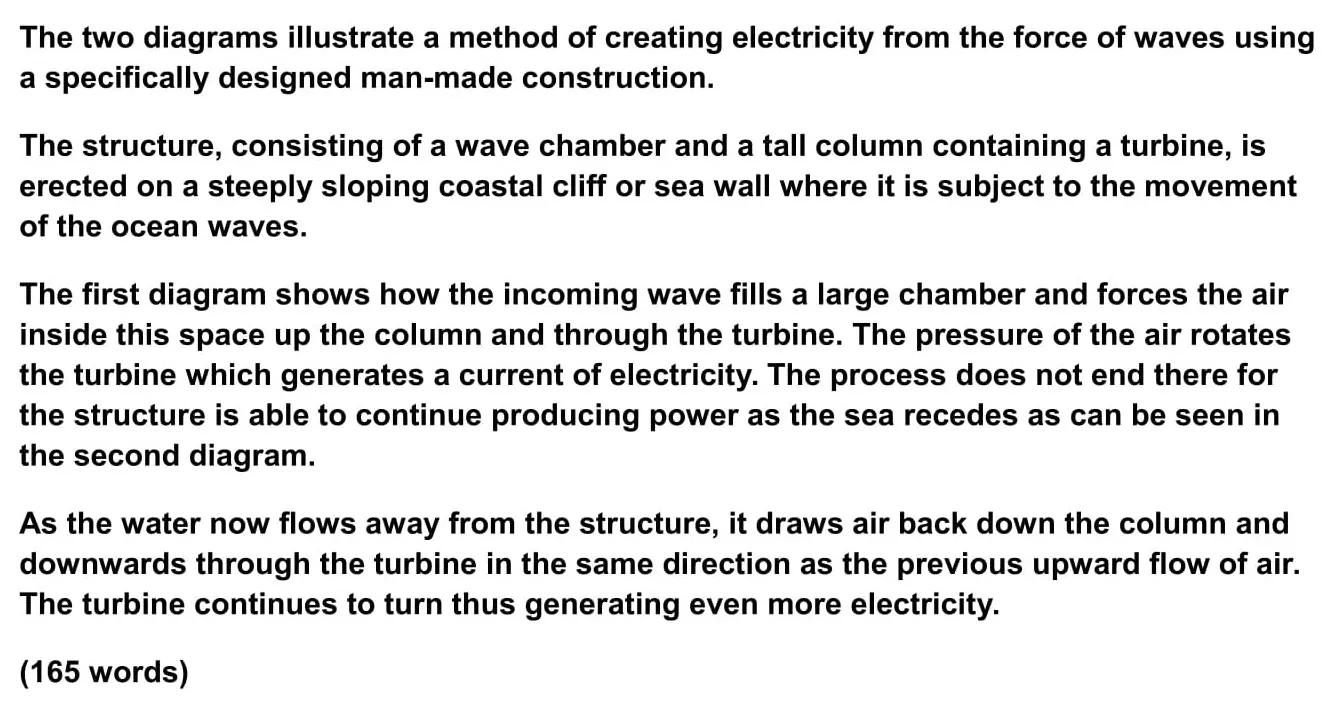
This sample IELTS process diagram essay is just over the minimum word limit so you can see that you don’t have space to include very much detail at all. That’s why it is essential to select just a couple of main features to write about.
Now use what you’ve learnt in this lesson to practice answering other IELTS process diagram questions. Start slowly at first and keep practicing until you can plan and write a complete essay in around 20 minutes.
Want to watch and listen to this lesson?
Click on this video.
Would you prefer to share this page with others by linking to it?
- Click on the HTML link code below.
- Copy and paste it, adding a note of your own, into your blog, a Web page, forums, a blog comment, your Facebook account, or anywhere that someone would find this page valuable.
Like this page?
Ielts academic writing task 1 – all lessons.
IELTS Academic Writing – A summary of the test including important facts, test format & assessment.
Academic Writing Task 1 – The format, the 7 question types & sample questions, assessment & marking criteria. All the key information you need to know.
Understanding Task 1 Questions – How to quickly and easily analyse and understand IELTS Writing Task 2 questions.
How To Plan a Task 1 Essay – Discover 3 reasons why you must plan, the 4 simple steps of essay planning and learn a simple 4 part essay structure.
Vocabulary for Task 1 Essays – Learn key vocabulary for a high-scoring essay. Word lists & a downloadable PDF.
Grammar for Task 1 Essays – Essential grammar for Task 1 Academic essays including, verb tenses, key sentence structures, articles & prepositions.
The 7 Question Types:
Click the links below for a step-by-step lesson on each type of Task 1 question.
- Table Chart
- Process Diagram
- Multiple Graphs
- IELTS Writing
- IELTS Process Diagram
- Back To Top
* New * Grammar For IELTS Ebooks

$9.99 each Full Set Just $ 23.97
Find Out More >>
IELTS Courses

Full details...

IELTS Writing Ebook

Discount Offer
$7 each Full Set Just $ 21

Find out more >>
Testimonials
“I am very excited to have found such fabulous and detailed content. I commend your good work.” Jose M.
“Thanks for the amazing videos. These are ‘to the point’, short videos, beautifully explained with practical examples." Adari J.
"Hi Jacky, I bought a listening book from you this morning. You know what? I’m 100% satisfied. It’s super helpful. If I’d had the chance to read this book 7 years ago, my job would be very different now." Loi H.
"Hi Jacky, I recently got my IELTS results and I was pleased to discover that I got an 8.5 score. I'm firmly convinced your website and your videos played a strategic role in my preparation. I was able to improve my writing skills thanks to the effective method you provide. I also only relied on your tips regarding the reading section and I was able to get a 9! Thank you very much." Giano
“After listening to your videos, I knew I had to ditch every other IELTS tutor I'd been listening to. Your explanations are clear and easy to understand. Anyways, I took the test a few weeks ago and my result came back: Speaking 7, listening 9, Reading 8.5 and Writing 7 with an average band score of 8. Thanks, IELTS Jacky." Laide Z.
Contact
About Me
Site Map
Privacy Policy
Disclaimer
IELTS changes lives.
Let's work together so it changes yours too.
Copyright © 2024 IELT Jacky
All Right Reserved
IELTS is a registered trademark of the University of Cambridge, the British Council, and IDP Education Australia. This site and its owners are not affiliated, approved or endorsed by the University of Cambridge ESOL, the British Council, and IDP Education Australia.
- IELTS Scores
- Life Skills Test
- Find a Test Centre
- Alternatives to IELTS
- General Training
- Academic Word List
- Topic Vocabulary
- Collocation
- Phrasal Verbs
- Writing eBooks
- Reading eBook
- All eBooks & Courses
- Task 1 Lessons & Tips
- Ielts Process Diagram
IELTS Process Diagram
It is less common in the writing test, but sometimes you will get an IELTS process diagram to describe.
This should follow the same format as any task 1:
- Introduce the diagram
- Give an overview of the main point/s
- Give the detail
Follow this link about how to write a task 1. However, there are different types of task 1 ( line graphs, pie charts, maps etc ) and each requires knowledge of a certain type of language .
This lesson will look at how to write an IELTS process diagram for task 1.
We also have a video lesson on writing an IELTS Process.

What is an IELTS Process Diagram?
To begin, look at this question:
You should spend about 20 minutes on this task .
The diagram illustrates the process that is used to manufacture bricks for the building industry.
Summarise the information by selecting and reporting the main features and make comparisons where relevant.
Write at least 150 words.
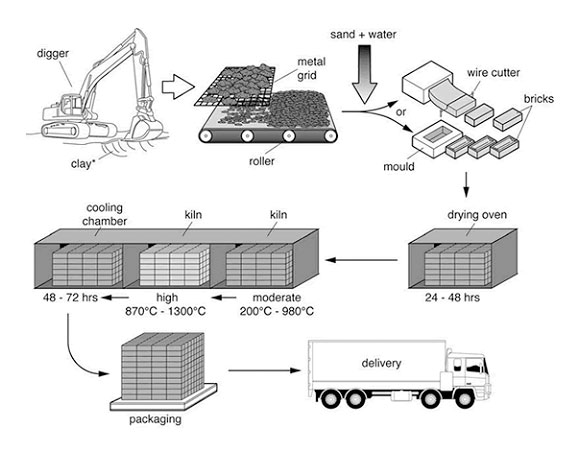
A process will have a number of stages that are in time order . So you should start at the beginning, and describe each stage through to the last one.
In the example above, this is fairly clear. It begins with the digging of the clay, and ends with delivery. Processes are not always this clear, and you may have to look more carefully to spot the beginning, and there may also be two things happening at the same time .
So it is important that you look at other sample processes to get a good understanding of how they can vary.
The Key Writing Steps
Introduce the diagram.
As with any task 1, you can begin by paraphrasing the rubric :
The diagram explains the way in which bricks are made for the building industry.
As you can see, this has been taken from the question, but it has not been copied. You need to write it in your own words.
Highlight the Main Points
An IELTS process diagram is different to a line, bar, pie chart or table in that there are not usually key changes or trends to identify. However, you should still give an overview of what is taking place.
The IELTS public band descriptors state that to achieve a band 6 or more for ‘ task response ’ the student must provide an overview in a task 1.
As there are no trends to comment on, you can make a comment on, for example, the number of stages in the process and how it begins and ends :
Overall, there are eight stages in the process, beginning with the digging up of clay and culminating in delivery.
Give the Detail
Now you need to explain the IELTS process diagram, and there are two key aspects of language associated with this:
1) Time Connectors
A process is a series of events , one taking place after the other. Therefore, to connect your stages, you should use ‘ time connectors ’.
Here is the rest of the answer with the time connectors highlighted (notice that you simply go from the beginning to the end of the process):
To begin , the clay used to make the bricks is dug up from the ground by a large digger. This clay is then placed onto a metal grid, which is used to break up the clay into smaller pieces. A roller assists in this process.
Following this , sand and water are added to the clay, and this mixture is turned into two differing types of brick by either placing it into a mould or using a wire cutter. Next , these bricks are placed in an oven to dry for 24 – 48 hours.
In the subsequent stage , the bricks go through a heating and cooling process. They are heated in a kiln at a moderate and then a high temperature (ranging from 200c to 1300c), followed by a cooling process in a chamber for 2 – 3 days. Finally , the bricks are packed and delivered to their destinations.
These connectors are the same you would use to write a graph over time when you explain a series of changes.
These are some common IELTS process diagram connectors:
To begin Following this Next Then After After that Before** Subsequently Finally
** If you use before , this means that you will be mentioning a later stage before an earlier stage, so you need to use it carefully. If you can use it properly though, it will get noticed.
Here is an example using stages four and five:
Before being dried in the oven, the mixture is turned into bricks by either placing it into a mould or using a wire cutter.
2) The Passive
When we describe an IELTS process that involves humans (a man-made process as opposed to a natural one), the focus is on the activities , NOT the person doing them.
When this is the case, we use the passive voice , not the active. For a natural process , such as the life-cycle of a frog, we use active as there is not a person doing the activity in the diagram.
This is a brief explanation of how to use the passive voice, but if you are new or unsure about using it, you should do some further study and practice.
Most sentences use this structure:
- Subject + Verb + Object
- A large digger digs up the clay in the ground.
In the active voice (as above), the digger is doing the verb i.e. the digger is doing the digging.
When we use the passive voice, we make the object (the clay) the subject, and make the subject (the digger) the object. We also add in the verb ‘to be’ and the past participle (or Verb 3).
- (S) The clay in the ground (V) is dug up (O) by the digger.
So throughout most of your description for your IELTS process diagram, you should be using the passive voice.
This is difficult as some verbs cannot take the passive. For example, 'to go' cannot be passive, so it is kept in the active voice:
- ...the bricks go through a heating and cooling process.
This is why you need to make sure you practice the passive so you know exactly how to use it.
Also, as you will see from the description, it is more usual to to comment on who or what is doing the action so the ' by.... " phrase is excluded.
Here is the same example description with uses of the passive highlighted:
The Passive Voice:
To begin, the clay (which) is used to make the bricks is dug up from the ground by a large digger. This clay is then placed onto a metal grid, onto a metal grid, which is used to break up the clay into smaller pieces. A roller assists in this process.
Following this, sand and water are added to the clay, and this mixture is turned into bricks by either placing it into a mould or using a wire cutter. Next, these bricks are placed in an oven to dry for 24 – 48 hours.
In the subsequent stage, the bricks go through a heating and cooling process. They are heated in a kiln at a moderate and then a high temperature (ranging from 200c to 1300c), followed by a cooling process in a chamber for 2 – 3 days. Finally, the bricks are packed and delivered to their destinations.
Varying your Language
Sometimes it may be appropriate just to use the same language that you are given in the IELTS process diagram to describe it, but you should try to vary it.
You may be able to use nouns from the diagram as your verbs. For example, the noun packaging in stage seven becomes:
Finally, the bricks are packed …
Follow this link from the model task 1 pages to see a full IELTS process diagram model answer for this process.
More Task 1 Academic Lessons:

Take an IELTS Quiz to test your IELTS knowledge
IELTS Quizzes to test and train you on the writing task and task 2 of the IELTS test. Gap fills and multiple choice.
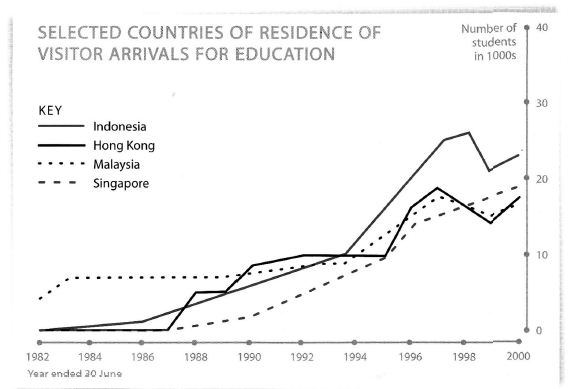
Tips for Organising an IELTS Line Graph
Organising an IELTS Line Graph - This lesson shows you have to improve the coherency of your graph in order to achieve a high band score.
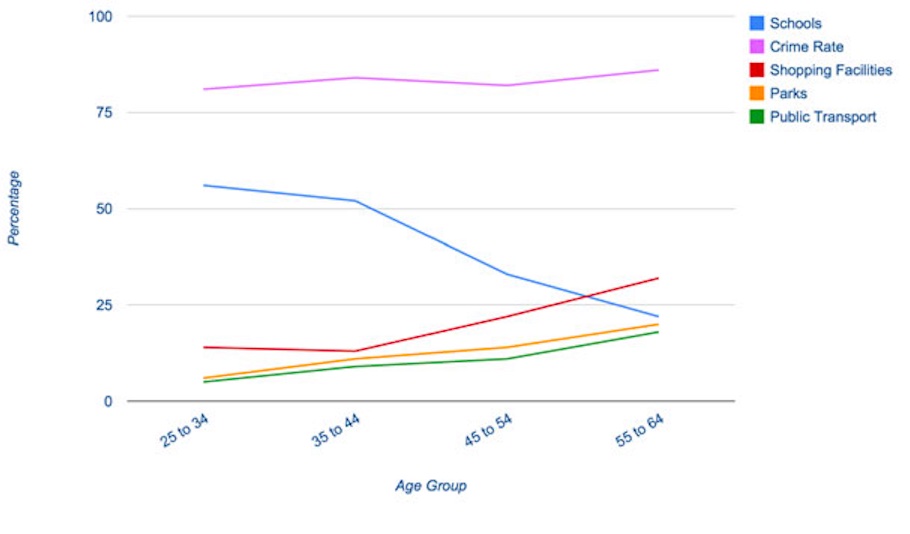
IELTS Task 1 Line Graph Structure Using Groups
For an IELTS Task 1 Line Graph there are different ways to organise your answer. Grouping information is a good way to get a logically structured response.
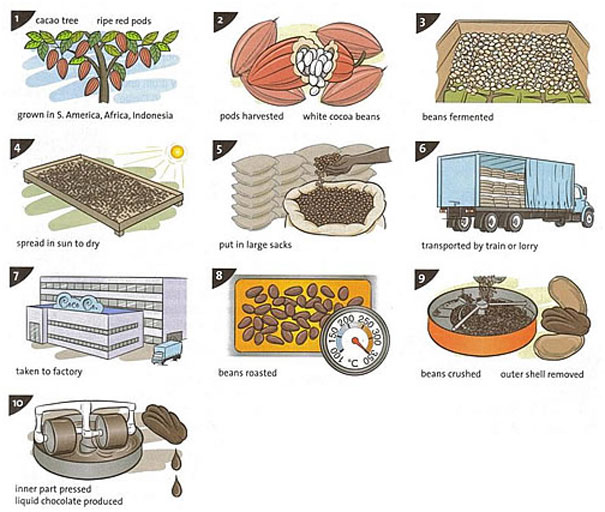
IELTS Task 1 Process: How chocolate is produced
This IELTS Task 1 Process Diagram is about the production of Chocolate Production. In a process you usually have to describe a process of making something.
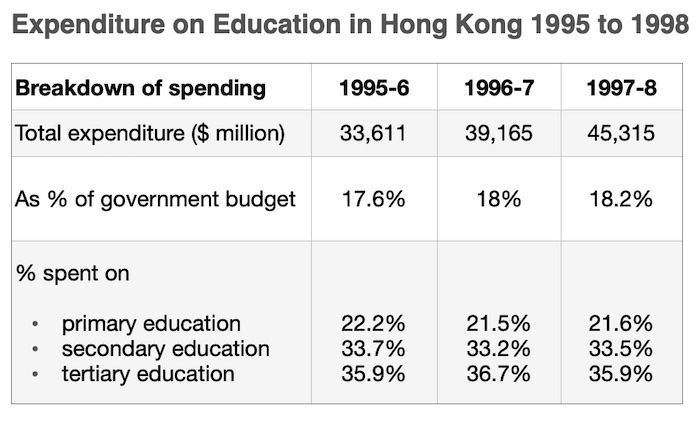
Describing Graph Trends Using the Language of Change
Describing graph trends: In IELTS you must know how to describe the trends that you see in the graph you are given. This lesson provides practice with some common language used to describe trends.
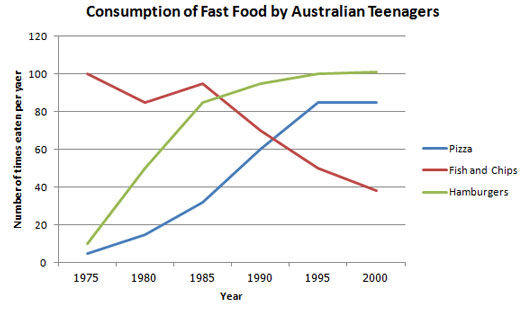
Describing IELTS Graphs: Tips to avoid a common mistake
IELTS Graphs: A common mistake In IELTS graphs is to get the subject of the graph wrong. This lesson explains how this mistake is made and show you what you need to do to avoid it. There is a also a practice exercise.
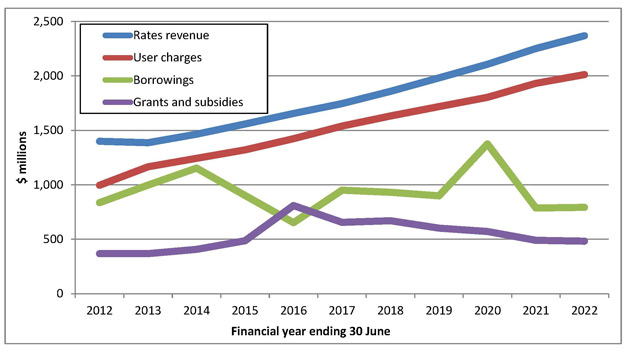
Which Tenses for IELTS are the Most Important?
Candidates often ask which tenses for IELTS are needed in order to do well in the exam. This lesson goes through the grammar tenses and how they apply to the test.
Writing Tips for a Graph in the Future in IELTS Academic
Graph in the future: Sometimes graphs in IELTS refer to a future time. You must know the language to write about these. In this lesson, learn how to write about an IELTS graph in the future. Getting the tenses right is an important part of the IELTS writing task 1.
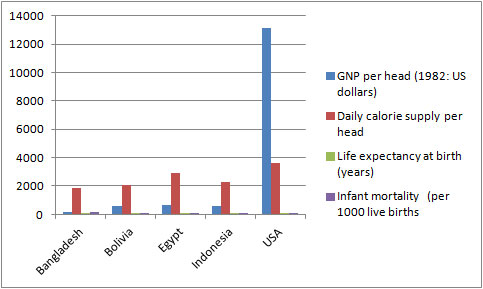
IELTS Table: Tips and techniques for a high score.
IELTS Table advice for a high score. Learn how to describe an IELTS table, which is just another way to present data.
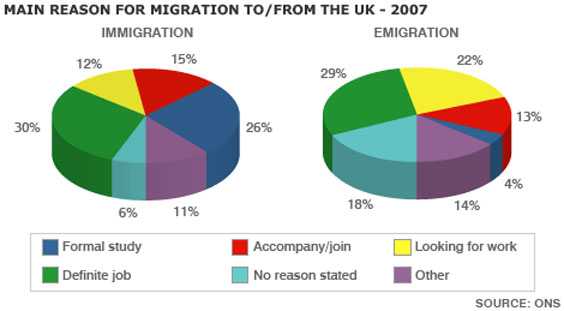
IELTS Pie Chart Strategies and Tips for a Band 7, 8 or 9
This IELTS pie chart lesson provides you with tips and advice on how to describe an IELTS Pie Chart in order to get a Band 7, 8 or 9.
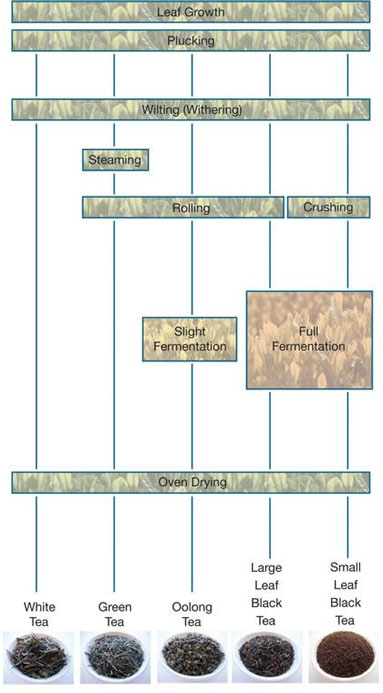
IELTS Process Writing Sample: The manufacture of tea
View an IELTS process writing sample answer with comments. In this sample answer you have to describe the process of making difference types of green tea.
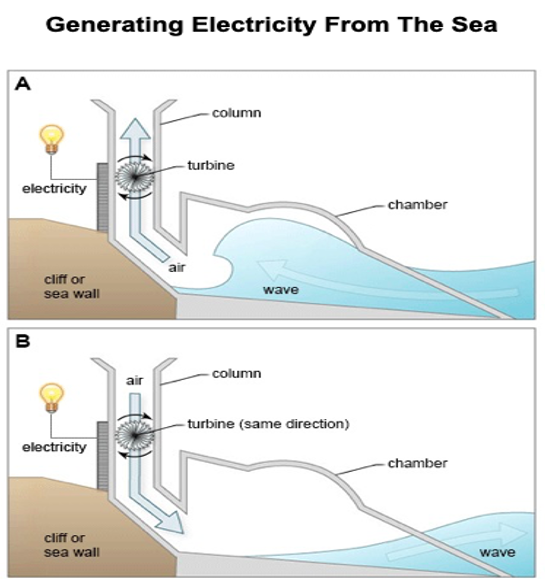
IELTS Task 1 Verb Quiz: Practice for processes and the passive voice
In this IELTS Task 1 Verb Quiz you can test yourself on choosing the right verb in a sample process diagram. This provides practice with the passive voice.

IELTS Process Diagram: The manufacture of bricks
With an IELTS process in academic task one you sometimes have to describe a process diagram rather than a bar chart or line graph. View a sample question plus model answer.
How to Describe an IELTS Academic Writing Task 1 Graph
IELTS Academic Writing Task 1: This lesson describes in a simple way how you should describe a graph for the academic part of the test for task 1. You need an introduction, overview and body paragraphs. These simple steps will show you how, and how to get a high score.

Useful Language for IELTS Graphs
This useful language for IELTS graphs looks at phrases for introducing graphs and describing changes
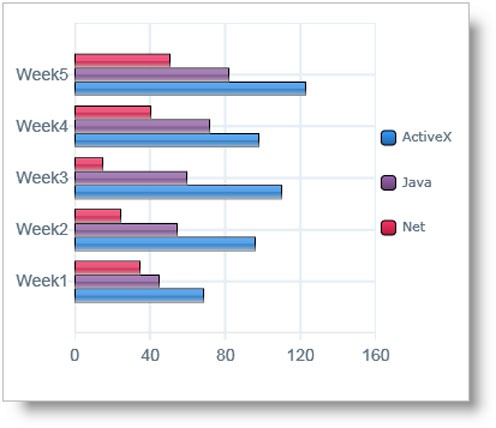
Describing an IELTS task 1 graph over time
This lesson shows you how to write an IELTS task 1 graph or chart that is over time.
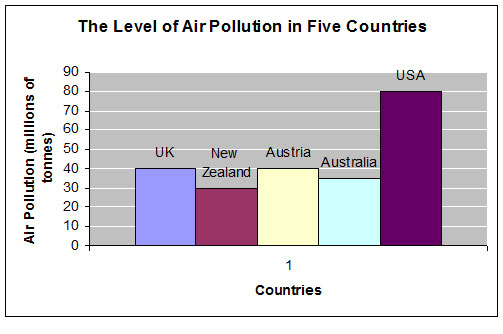
Learn Compare and Contrast Language for IELTS Graphs
Compare and Contrast Language: In the academic IELTS task 1, you have to know the right language if you want to get a band 7 or higher. Practice your IELTS language for bar charts in this task 1 writing lesson.
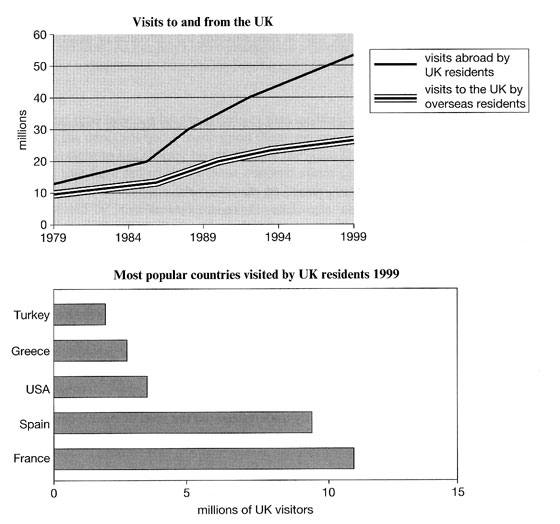
IELTS Bar and Line Graph: How to describe two graphs together
This Bar and Line Graph example shows you how you can write about two charts together in the IELTS test for task 1, with strategies and techniques.
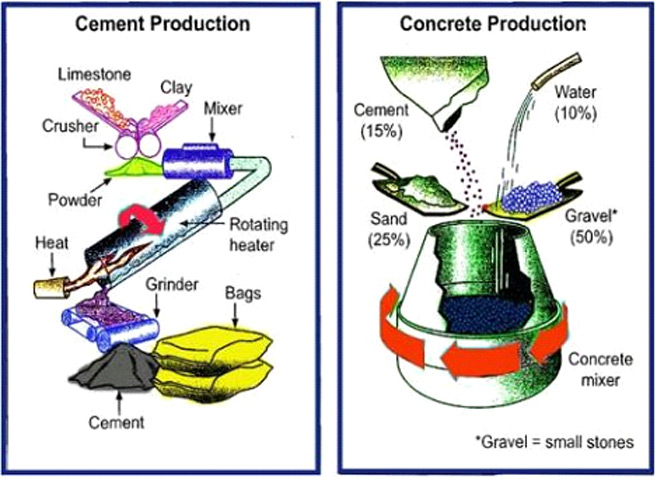
IELTS Process Exercise: Master your skills for the passive voice
IELTS Process Exercise Gap Fill: This teaches you how to use the passive voice for IELTS Task 1
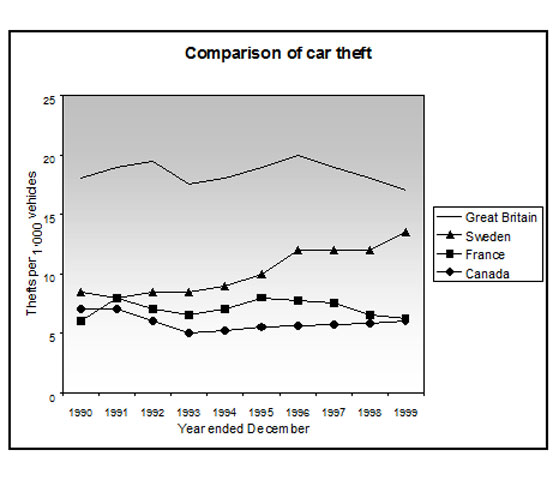
Prepositions in Graphs Quiz: Between; from; to; at; of; in; with; by
Prepositions in Graphs: Practice using prepositions in the IELTS test. View a model answer and practice using a gap fill.
Any comments or questions about this page or about IELTS? Post them here. Your email will not be published or shared.
Before you go...
Check out the ielts buddy band 7+ ebooks & courses.

Would you prefer to share this page with others by linking to it?
- Click on the HTML link code below.
- Copy and paste it, adding a note of your own, into your blog, a Web page, forums, a blog comment, your Facebook account, or anywhere that someone would find this page valuable.
Band 7+ eBooks
"I think these eBooks are FANTASTIC!!! I know that's not academic language, but it's the truth!"
Linda, from Italy, Scored Band 7.5

IELTS Modules:
Other resources:.
- All Lessons
- Band Score Calculator
- Writing Feedback
- Speaking Feedback
- Teacher Resources
- Free Downloads
- Recent Essay Exam Questions
- Books for IELTS Prep
- Useful Links

Recent Articles
House Sitting
May 31, 24 03:59 AM
Key Phrases for IELTS Speaking: Fluency and Coherence
May 26, 24 06:52 AM
May 16, 24 04:44 AM

Important pages
IELTS Writing IELTS Speaking IELTS Listening IELTS Reading All Lessons Vocabulary Academic Task 1 Academic Task 2 Practice Tests
Connect with us
Copyright © 2022- IELTSbuddy All Rights Reserved
IELTS is a registered trademark of University of Cambridge, the British Council, and IDP Education Australia. This site and its owners are not affiliated, approved or endorsed by the University of Cambridge ESOL, the British Council, and IDP Education Australia.
- TOEFL Writing Correction Topics
- OET Mock Tests
- Writing Correction
- Speaking Mock Test
- Reading Course
- Listening Practice Tests
- FREE Practice Tests
- OET Writing Correction
- OET Reading Course
- OET Speaking Mock Test
- TOEFL Writing Correction
- PTE Writing Correction
- OET Listening Practice Tests
- OET (Occupational English Test)
- PTE (Pearson Test of English)
- Academic Task 1
IELTS Flow Chart Academic Writing Task Guide
- Task 1 Guide
- Table & Bar
- Bar & Pie
- Table & Pie
- Compare Contrast
- Identifying Trends
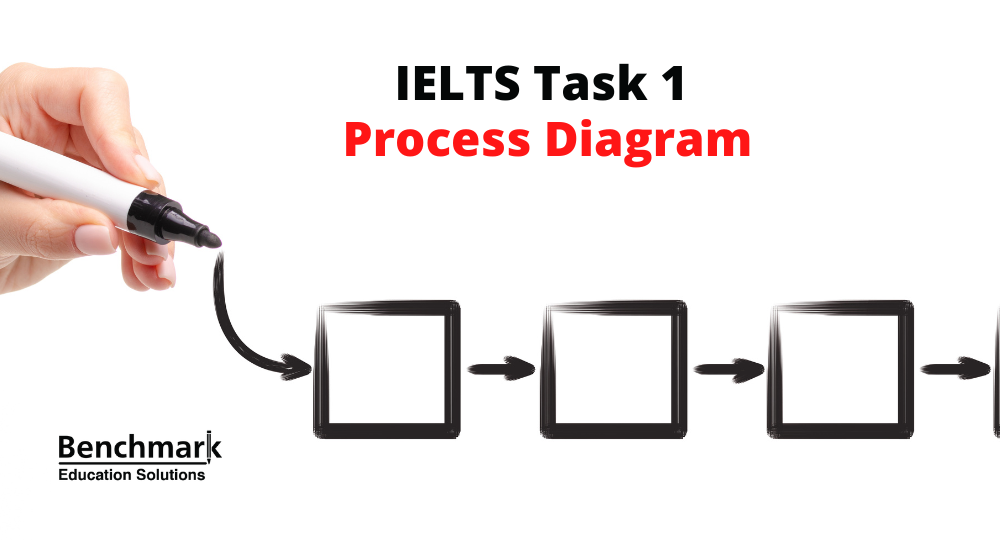
This guide will help you to understand process diagrams and flow charts for IELTS Academic Writing Task 1.
Table of Contents
1.1 objective, 1.2 skills used, 2.1 process diagram.
- 2.2 Flow Chart
3.1 Introduction and Overview
3.2 main body paragraphs.
- IELTS Writing Task 1 Band Descriptors Explained
- 5.1 Linking phrases for Process Diagrams/ Flow Charts
6.1 Present Simple Passive
6.2 present perfect passive, 6.3 participle structures, 7.1 sample answer commentary, 8.1 problem 1, 8.2 problem 2.
- Quiz- Check Your Understanding
1. IELTS Process Diagram/ Flow Chart Overview
Process diagrams and flow charts fall under the same category as they require the same type of response and approach. They are not a very common IELTS writing task 1 question in the exam.
An IELTS process diagram will illustrate several stages of a process using pictures . A flow chart is visually more simple and will illustrate a process using a series of boxes and directional arrows .
Although a process diagram/flow chart is not a very common IELTS writing task 1 question type, it is important to be prepared in case it comes up in your IELTS exam.
The main aim of this task is to produce a minimum of 150-word report that summarises, reports and compares the main features of the process diagram or flow chart.
Even though the information in a process diagram/flow chart is being presented using pictures or boxes, you are still being tested on the same skills as you need for graphs and charts in IELTS writing task 1.
You need to select the key features of the diagram or chart, summarise the important information and make comparisons when it is appropriate.
The tone of your report should be formal and you must write at least 150 words .
2. IELTS Task 1 Process Diagram and Flow Chart Questions
The process diagram/ flow chart will either describe a natural process or a production process. Sometimes a decision making process can be there – for instance, steps to buying a house. Here is an example of the process of producing and making a cup of tea:
The picture below show how tea is produced and then illustrate the process of making a cup of tea.
Summarise the information by selecting and reporting the main features making comparisons wher relavant.
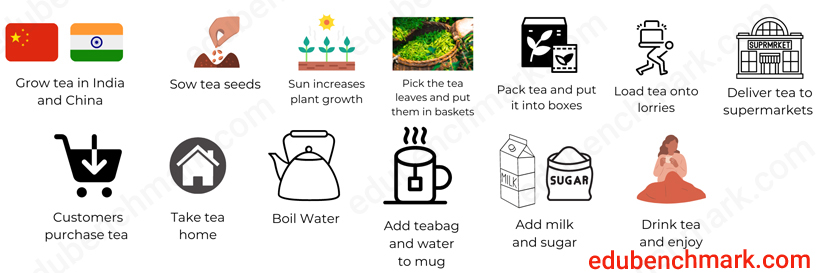
IELTS External links
Also, read the following IELTS Report Writing Guides
- IELTS Bar Chart
- Line Graph IELTS
- Pie Chart for IELTS
- IELTS Academic Table
- IELTS Academic Process Diagram
- Maps for IELTS
- Combined - Table and Bar Chart
- Combined - Bar Chart and Pie Chart
- Combined - Table and Pie Chart
- IELTS Writing Task 1 Guide

2.3 Flow Chart
Below is an example of a flow chart that illustrates a the process of enrolling at a university:
The diagram shows the procedure for successful high school graduates to enrol at university.
Summarise the information by reporting and selecting the main features making comparisons where relevant.

3. Structure for IELTS Process Diagram/ Flow Chart Questions
You should write your report for these question types using a clear structure and logical paragraphing. Read on for more information about what to include in each paragraph.
Unlike your response to an IELTS graph, chart, map or table, you do not need to separate your introduction and overview paragraph for a process diagram/ flow chart.
In this paragraph, you need to summarise the diagram or chart in one statement. You must include all the key features. This is the most important paragraph in IELTS writing task 1.
Here are some useful phrases to introduce your first paragraph :
- The flow chart show information about …
- The pictures in the process diagram illustrate information about …
- The diagram illustrates information about …
The diagram shows information about …
Here are some sentence endings for the process of tea (tea could be replaced with the relevant process for your question):
- …how to grow tea
- …how a cup of tea is made
- …the process of growing tea
- …the process by which tea is grown
- …the steps involved in growing tea
- …the stages of making a cup of tea
Your main body paragraphs should go into more detail than your overview. Note that you do not have to separate your body paragraphs according to the number of diagrams . For example, there are four diagrams, you do not need to write four paragraphs: we recommend you write one or two paragraphs .
Here are some more helpful hints for your main body paragraphs :
- You should write about each stage of the process , but you will be able to write about some in more detail than others
- Use the vocabulary that is given to you in the diagrams
- You will need to change the tense of any sentences you are given (e.g. the imperative ‘dry the leaves’ would need to be changed to the passive ‘the beans are dried’)
- Use a mix of the passive and active voice. Keep in mind that passive voice helps to explain a process better.
- When using the passive voice and, if you think it is necessary, you can add the agent to the end of the sentence e.g., ‘after the tea is picked by the workers ’
- Use linking phrases to describe the start , next stages or end of a process (see Vocabulary for IELTS Process Diagrams/Flow Charts )
4. IELTS Writing Task 1 Band Descriptors Explained
Our section on IELTS Writing Band descriptors in our IELTS writing Task 1 Masterclass is full of helpful hints for each marking criterion.
5. Vocabulary for IELTS Process Diagrams/Flow Charts
5.1 linking phrases for process diagrams/flow chart.
You should use a range of linking phrases throughout your report.
You can use the following linking words and phrases to describe the start , next stages and end of a process:
6. Grammar for IELTS Process Diagram/Flow Charts
The present simple passive is useful for describing a process because you can put focus on the object involved in the process.
Present Simple Passive Form : Object + is/are + past participle
Examples : The tea is picked and put into baskets. The tea is boxed and delivered to supermarkets. The water is boiled and then poured into the cup.
The present perfect passive is useful when you want to write about two stages of the process in one sentence.
Present perfect passive form : Object + have/has + been + past participle
In the first part of the sentence, use the words :
Examples : Once the tea leaves have been picked , they are placed into a basket. When the tea has been picked , it is packed into boxes. After the tea has been put into boxes, it is driven to supermarkets.
The present simple passive can be replaced by a participle structure. This will help to increase your grammatical range.
Participle forms : After being + past participle + subject + second half of sentence Having been + past participle + subject + second half of sentence
Examples : Having been picked from the field, the tea leaves are placed into a basket. After being packed into boxes , it is driven to supermarkets.
7. IELTS Writing Task 1 Process Diagram Sample Answer
The pictures below show how tea is produced and then illustrate the process of making a cup of tea.
Summarise the information by selecting and reporting the main features making comparisons where relevant.
The diagram shows information about the process of growing tea and the steps involved in making a cup of tea. There are thirteen stages in the process, beginning with the growing and sowing of the tea seeds in India and China and finishing with drinking a cup of tea.
In the first and second stage , tea leaves are sown and grown in India and China, left to grow in the sun and then the leaves are picked and put into baskets. Once the leaves have been picked , they are packed and put into boxes before being loaded onto lorries and delivered to supermarkets. Having been delivered , the tea is then purchased and taken home by customers.
If we look at the process of making a cup of tea , to begin with the customer first boils a kettle of water. After the water has boiled , they then add the tea bag to the cup before adding the desired amount of milk and sugar. The final stage is that the tea can be drunk and enjoyed. This completes the process of making a cup of tea from beginning to end.
The report above would receive an estimated 9.0 overall in the IELTS writing task 1 Academic paper.
It has been organised into logical paragraphs that are clearly divided into an introduction/overview and then two main body paragraphs separated into the first and last stages of the process. All stages of the process have been mentioned.
The minimum 150 words has been exceeded. The report is written in a formal style (the write has not included their opinion and has not used informal language)
The passive voice has been accurately used throughout the report, for example ‘Once the leaves have been picked’. Lexical items such as ‘once’ and ‘after’ have been used to create order and cohesion. The present perfect passive has been used to introduce more than one process in a sentence, e.g. ‘After the water has boiled, they then add the tea bag to the cup’.
Linking phrases such as ‘In the first and second stage…’ and ‘The final stage’ have also been used to order the process. The participle sentence ‘Having been delivered, the tea is then purchased and taken home by customers’ also adds to the grammatical range.
8. Common Errors and How to Avoid Them
Problem 1 Not using the passive voice effectively.
Solution 1 You need to use the passive voice when describing an IELTS process diagram or flow chart because it is often not clear who is doing the action and you want to put focus on the object of the sentence. Make sure you practise forming the present simple passive and present perfect passive as these will be very useful when writing this type of report.
Problem 2 Missing some of the stages in the diagram.
Solution 2 You should aim to write about each stage of the process. However, this does not mean you need to go into detail for each stage and you will have more to write about some stages than others.
9. Quiz- Check Your Understanding
Take this short quiz to test your understanding of writing task 1 and process diagrams/ flow charts:
- False Answer: B. False Exp × Explanation: Unlike your response to an IELTS graph, chart, map or table, you do not need to separate your introduction and overview paragraph for a process diagram/ flow chart (although you may choose to separate them if you wish).
Explanation: Although a process diagram/ flow chart is not a very common IELTS writing task 1 question type, it is still important to be prepared in case it comes up in your IELTS exam.
- The graph shows…
Explanation: A. cannot be used when writing about process diagrams/ flow charts, it is more suitable for line graphs.
Explanation: You should create order in your report. For example, you could choose to write about the first stages of the process in body paragraph 1, and the last stages in body paragraph 2.
Explanation: You should mention each stage, but you do not have to write about every stage in detail.
Explanation: The present simple passive and present perfect passive are very useful when writing about processes.
- The tea is picked and put into baskets. Answer: A.
- The workers pick the tea and put it into baskets
- After the workers pick the tea, they put it into boxes.
- When the tea has been picked, it is packed into boxes. Answer: B.
- The trees in the city had been cut down.
Explanation: A. is an example of the past perfect passive and C. is an example of the past simple passive.
- The trees in the city were cut down
- Finally,...
- In the first stage,...
- is grown… Answer: C. Is grown is the passive form, not a linking phrase.
Leave a Reply Cancel reply
Your email address will not be published. Required fields are marked *
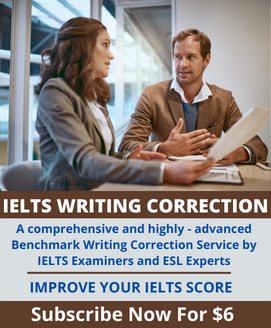
- ielts writing
- ielts listening
- ielts speaking
- ielts reading
- ielts practice test
- IELTS Sample Reports
- IELTS Sample Essays
- IELTS Sample Letters
- IELTS Vocabulary
- IELTS Score Calculator
- IELTS Mock test
Exam Updates & Tips!
Signup for preparation and special offers!
You have successfully joined our subscriber list.
Purdue Online Writing Lab Purdue OWL® College of Liberal Arts
The Writing Process

Welcome to the Purdue OWL
This page is brought to you by the OWL at Purdue University. When printing this page, you must include the entire legal notice.
Copyright ©1995-2018 by The Writing Lab & The OWL at Purdue and Purdue University. All rights reserved. This material may not be published, reproduced, broadcast, rewritten, or redistributed without permission. Use of this site constitutes acceptance of our terms and conditions of fair use.
In this section
Subsections.

IELTS with Mark Teacher
How to write ielts task 1 academic ‘process diagrams’.
There are 3 main types of diagrams in Writing Task 1 Academic: a.) Dynamic graphs b.) Static graphs c.) Diagrams ( Maps , Processes) <– we’re talking about processes
In this post I will show you how to write about Process Diagrams.
Already know how to write IELTS Task 1 Processes? Send me your practice essays for expert feedback:

Fortunately, the essay structure for every type of Task 1 is basically the same.
Structure: Task 1 – Academic 4 paragraphs 1.) Summary / Introduction 2.) Overview 3.) Body 1 4.) Body 2
What are Process Diagrams?
Process diagrams describe the sequence of steps either to show how something is made or how something works. The steps of each process are numbered or labelled to help you understand it
For example, this process diagram shows how glass containers are made . The steps of the process are numbered 1 to 9.

Sometimes you might see a natural process . For example, this process diagram shows the life cycle of a fish.

But in most cases, an IELTS Writing Task 1 process diagrams depict a manmade structure :

You might also get a diagram with 2 separate processes. For example, this process diagram shows how a hot air balloon ascends (goes up) and descends (goes down) . The steps for each process are labelled.

In this blog post we will look at how to approach all kinds of IELTS Writing Task 1 process diagrams, paragraph-by-paragraph.
1.) Process Diagram Introduction / Summary
The introduction paragraph in Task 1 only needs to be 1 or 2 sentences. Like all IELTS Writing Task 1 essays, your introduction should present the main purpose of the graph to the reader in your own words. This means paraphrasing the official IELTS diagram description if you can.
In most cases, you can use one of the following phrases to start your introduction:
- The diagram shows … the glass+gerund process / cycle
- The diagram depicts … the process of + Gerund
- The diagram explains … how [noun] is made / is done / is created
We use the Present Simple because the process is always the same.
Here is a language table which you can use to help you create Process Diagram introductions:
Here are some examples of introduction/summary paragraphs using the language table above.

- The pictures show … how plastic bottles are recycled
- The diagram shows … the process of recycling plastic bottles.
- The diagram shows … the plastic bottle recycling process.
Another example:

- The images illustrate … the process of flying a hot air balloon.
- The diagram depicts … how a hot air balloon is flown and operated.
You try! – Write an introduction sentence for this process diagram task. Use the table above to help you.

- The diagram explains … the process of shaping glass containers.
- The pictures depict … how glass containers are created and shaped.
2.) Map Diagram Overview
The purpose of the overview paragraph is to give a short summary of the main features.
In process diagrams, the main features can include:
- The starting actions of the process and the final outcome .
- The machines that have the most significant effect or have similar functions. e.g. ovens/kilns for heating – crushers/mixers for breaking down the material, generators/turbines for creating electricity or energy)
- The changes in the state of the materials (liquid > metal / cold > hot / shaped > destroyed)
Here is a language table you can use to help you create your own process diagram overviews:
In some cases, to make a longer overview it is also possible to [combine] some of the features above. I do this in my examples below:

- Overall, we can see that the plastic bottles go from being collected to re-made as consumer items , [during which time] they are taken from empty used bottles and are reduced to a raw material through a series of compressing machines and crushers .

In process diagrams about how machines work, the most common main feature is to highlight the main machinery or mechanisms in the diagram and describe what their function is. For example:
- Overall, we can see that … the operator of the hot air balloon primarily uses a system of cords, valves and burners to control the height of the balloon.
- Overall, we can see that … controlling the height of the hot air balloon involves a system of cords, valves and burners , which allow the operator to lift and lower the balloon.
You try! – Write an overview paragraph for this process diagram task. Use the table above to help you.

- Overall, we can see that … glass is put through a series of furnaces , kilns and moulds to eventually be shaped into a finished product.
- Overall, we can see that … glass pieces are melted down before being pressed and moulded into a container-like shape and eventually checked for quality .
3.) Body Paragraphs
Next are the Body paragraphs of your Task 1 report. You can write 2 or 3 Body paragraphs.
Body paragraphs describe the main features of the process in detail, including the specific actions or machines used in every step.
It is absolutely best to go through the process chronologically (from start to finish).
To help the reader follow the process, you should also use signposts to tell the reader when you are describing the next step.
You can use basic signposts or advanced signposts.
Use the labels on the diagram to help you write. Often these labels have a verb or adjective form. You can also use the active voice or passive voice of the verb to avoid repetition and show your vocabulary/grammar ability.
For example:

Sorting : to sort Passive Voice: is / are sorted – “The bottles are sorted into 2 groups…” Adjective: sorted – “The sorted bottles are sent to … [Step 4]” .
In most cases, the Passive Voice is the most common voice to use in IELTS Task 1 process diagrams, that’s for two reasons:
- The process is the same every time (it doesn’t matter who does it)
- We don’t always know who operates the machines (it’s not an important feature)
Here are some examples of full essays that use the same tips as above. The [signposts] and [the passive voice] have been highlighted.

Introduction: The diagram shows the process of recycling plastic bottles.
Overview: Overall, we can see that the plastic bottles go from being collected to re-made as consumer items, during which time they are taken from empty used bottles and are reduced to a raw material through a series of compressing machines and crushers.
Body 1 : [First of all], disposed of plastic bottles are collected from recycling bins. [ Before], a garbage truck transports the bottles to a recycling centre . [ After they have arrived,] the bottles are sorted into two categories based on their viability, and the usable bottles are compressed into large blocks.
Body 2 : [After that] , these blocks are crushed into small pieces of plastic, where they are then washe d . The small plastic pellets that are produced and then are put into another machine which creates heated pellets that form raw material . [Finally] , this raw material is used to produce brand new products such as bottles, clothes, recycled bags and even pencils. (162 words)

Introduction : The diagram depicts how a hot air balloon is flown and operated.
Overview : Overall, we can see that controlling the height of the hot air balloon involves a system of cords, valves and burners, which allow the operator to lift and lower the balloon.
Body 1 : (focus on ascending) In order to ascend, the pilot must [first] open the gas tanks located inside the passenger basket and ignite the burners. With the valve at the top of the hot air balloon closed, this allows more hot air to fill the balloon envelope, which causes the balloon to rise.
Body 2 : (focus on descending) In contrast, to descend the balloon, the gas tanks and burners must be closed and turned off . [Then, once the valve cord is pulled by the operator] , the valve at the top of the balloon opens and allows the hot air to be released . [As the hot air leaves the balloon] , the entire craft begins to return to the ground. (164 words)
You try! – Write the body paragraphs for this process diagram task. Use the examples above to help you.

Overview: Overall, we can see that glass is put through a series of furnaces, kilns and moulds to eventually be shaped into a finished product.
Body 1: [First] small glass pieces are put into a furnace and are heated at 105 degrees Celsius to create hot glass. [When the glass has melted] it is then placed inside the first mould of the process and pressed , shaping the glass into a cup or container. [Afterwards] the glass is moved to a second mould where air is allowed inside. This makes the glass wider and taller in shape.
Body 2: [Then] the newly moulded cup is heated again in a kiln, this time at a lower temperature of 482 degrees. [After that] the cup is allowed to cool for 60 minutes at just 25 degrees, during which time the heat is also released . [Finally] the cooled glass is checked and sorted into two categories, one to be packaged and sold , the other to be discarded as waste.
There you go! A high-band approach, several examples and a reliable framework for you to use in your own IELTS Writing test.
Questions? Write them in the comments below.
Send me your IELTS Writing Task 1 practice essays and get expert feedback in 72 hours!

<– Back to Task 1 Academic example essays and lessons.
Share this:
- Click to share on Twitter (Opens in new window)
- Click to share on Facebook (Opens in new window)
Related Posts

IELTS Writing Task 1 Essay Sample – Static – News Sources
Learn how to write high-band IELTS Task 1 essays like this with my IELTS Task 1 – Static Graph eBook: Click here or the picture below! Want me…

IELTS Writing Task 1 Essay Sample – Static – Tea & Coffee Habits

IELTS Writing Task 1 Essay Sample – Static – Library Use

IELTS Writing Task 1 Essay Sample – Process – Geothermal Electricity
The diagram below shows how geothermal energy is used to produce electricity. Want me to check your IELTS Task 1 essays? You can send me your own IELTS…

IELTS Writing Task 1 Essay Sample – Map – Norbiton Industrial Area
If you want to learn how to write IELTS Task 1 essays like this one, you can get Advanced eBook here: Or …. you can send me your…

IELTS Writing Task 1 – Maps e-Book – Out now!
I’m excited to announce another addition to my growing IELTS Writing Task 1 eBook series! The latest downloadable PDF is all about Maps! 19 pages of grammar and…
- Skip to primary navigation
- Skip to main content
- Skip to primary sidebar
IELTS Training with Jonathan
Helping Busy People Succeed in IELTS.
The 3 steps to writing a great IELTS Writing Task 1 using Process Diagrams.
By ielts-jonathan.com on 19 February 2021 0
IELTS Task 1 Diagrams Questions
Hi I’m Jonathan.

I’m going to run through answering an IELTS Diagram question. Following these tips would give you a high Task 1 band score.
If you follow this post, then you can apply the same principles to other diagrams, as well as other IELTS Task 1 questions
Before you get started with IELTS Diagrams, look at these articles first.
How to write an Introduction
How to write an Overview
How to write the Main Bodies
If you are familiar with the content, skip to the next section.
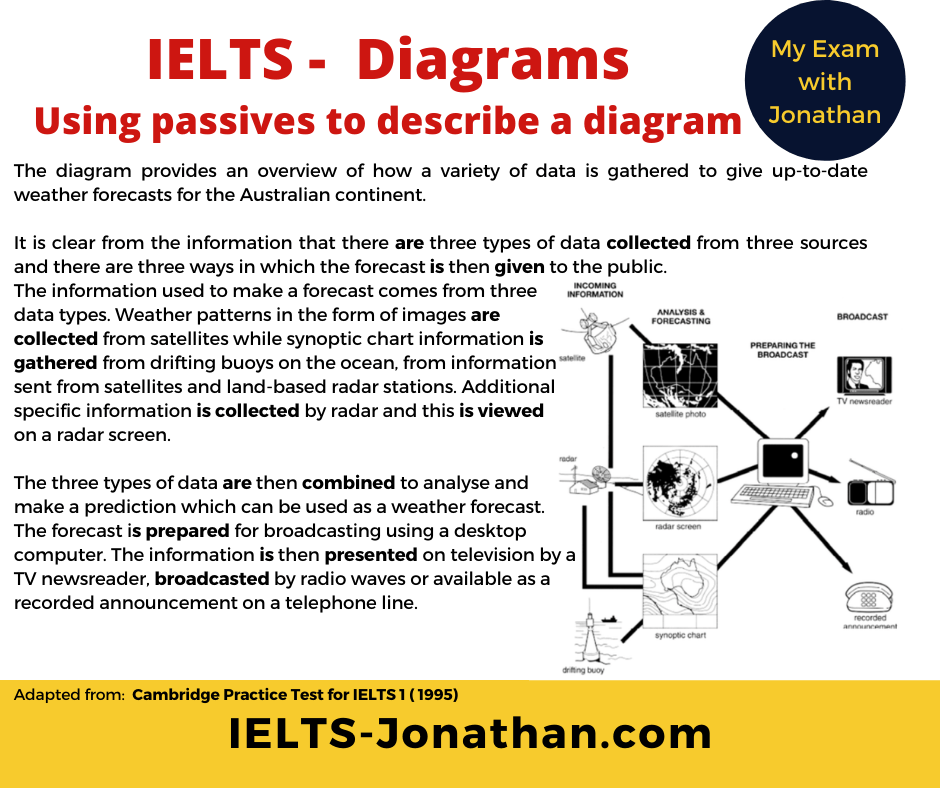
The key to writing about Diagrams is noticing the number, sequence and the order of stages.
You then need report, as much in your own words, what happens in each stage and describe how each stage is important by paraphrasing the task.
For this type of essay it is standard to write a three or four paragraph report, namely
An Introduction, An Overview and one or two body paragraphs.
IELTS Writing Task 1: Describing a Diagram
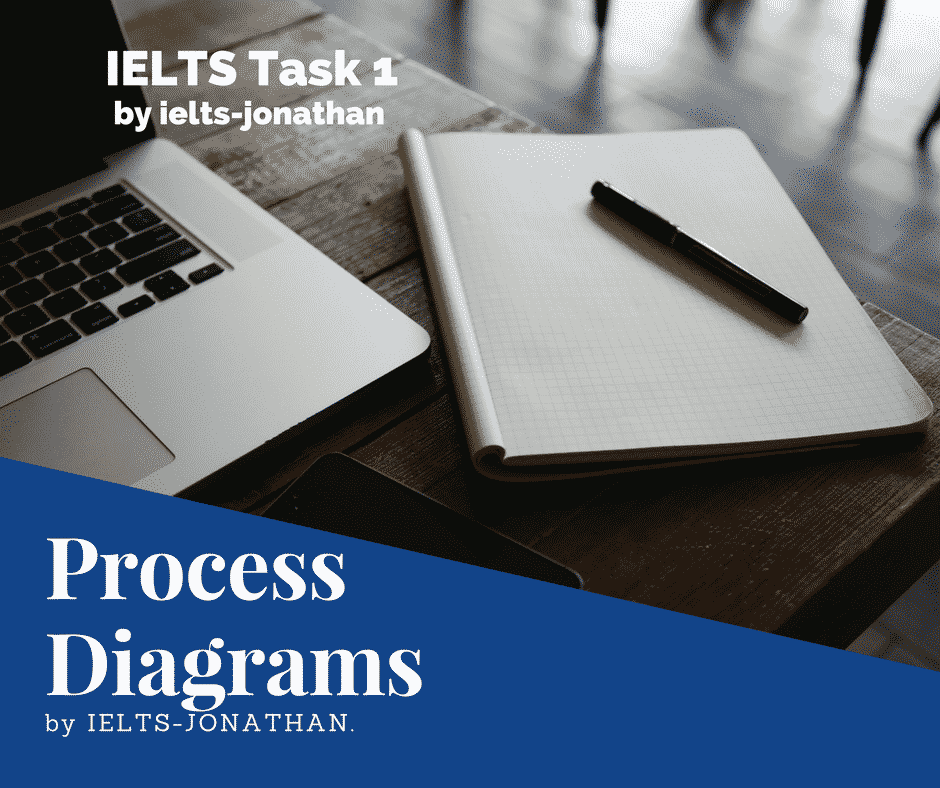
Problems with IELTS Diagrams
IELTS Diagram questions are very visual. They may seem easier to answer than other formats.
They are less common than charts, graphs or tables, so students often prepare less for these type of tasks.
Always be prepared for any type of IELTS questions!
The good news is the preparation won’t take as long as you might think.

Diagrams follow the same format as any IELTS Task 1:
- Introduce the diagram
- Give an overview of the main point/s (necessary for Band 6 and above)
- And provide the detail
This post will explain:
- Examples of diagram questions
- The tried and tested method for answering any diagram question
- How to write the introduction
- How to write a ‘great’ overview
- How to write about the detail in sequence
- The commons mistakes IELTS students make
What is an IELTS Diagram Question?
These types of question can be divided into two types: natural cycles and man-made or industrial processes .
Official IELTS practice questions have featured natural cycles such as the life cycle of frogs , moths and butterflies , the natural water cycle or how cows produce milk for their calves .
In contrast, other practice questions have included man-made processes such as how coffee , tea or leather is made , bricks are made or a satellite signal is transmitted and received.
More good news is that the same skills and principles can more or less be applied to both man-made and natural cycles.
Let’s consider a typical question first.
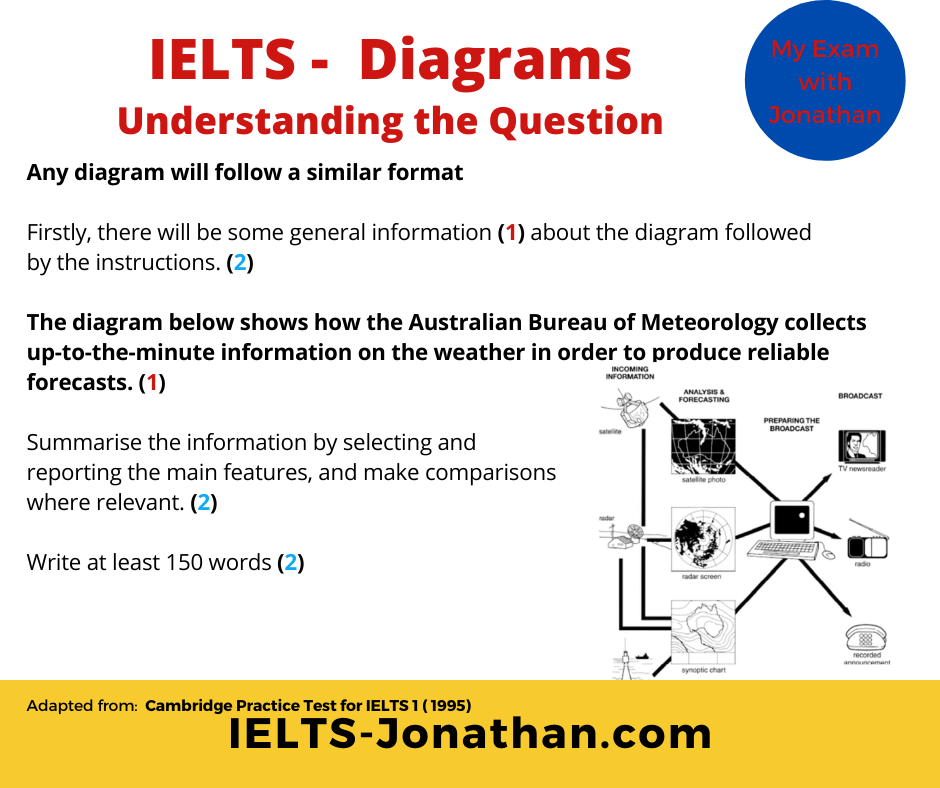
Here is the diagram we are going to use.
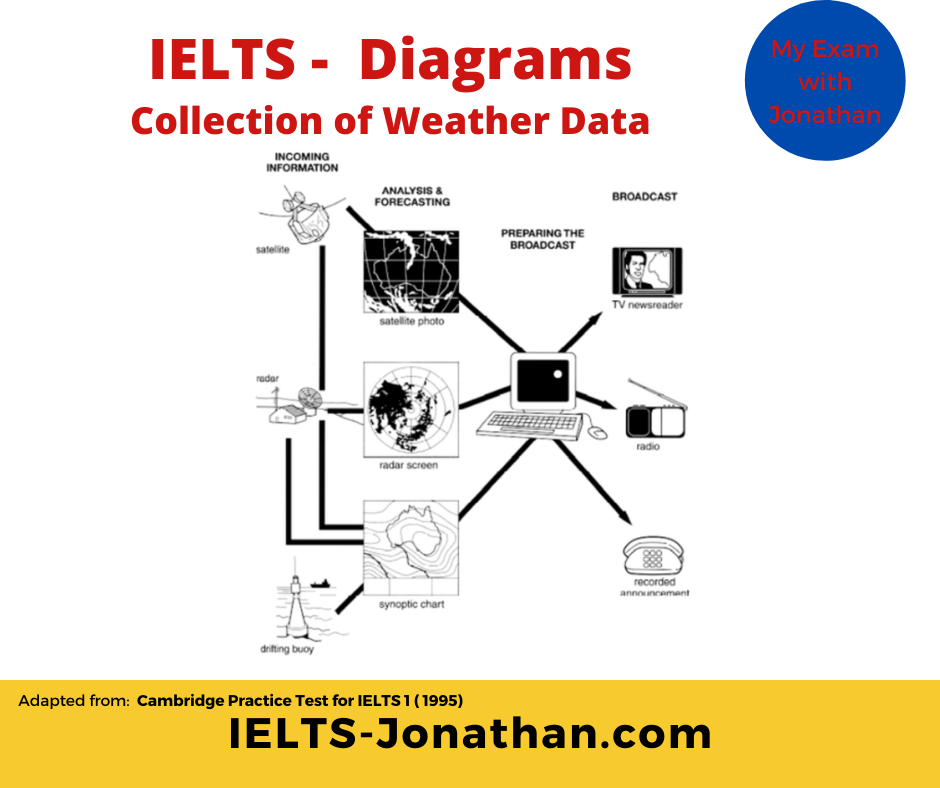
A Good Teacher’s Guide to IELTS Planning.
A good IELTS teacher will highlight the need to understand the task quickly and plan an answer quickly too.
You only have 20 mins to write your report.
You can do this like so:
Get an overall visual understanding of the diagram
- Paraphrase the question
- Consider an overview
- Divide the diagram into parts and report
- Include time to proofread your writing
Gaining an overall understanding of the illustration
A diagram has a number of stages . These may time order ed or sequenced. Start at the beginning, try and understand the number of stages or sequences.
Y ou may need to describe stages happening simultaneously or a different stages in the diagram.
In the example above, it is not so obvious!
There appears to be three kinds of information that is gathered and used by a computer and then, there are three ways in which the information is processed and used.
There also appear to be a number sequences that happen at the same time .
It’s quite a challenge to write about something you have never seen, so it is important that you study the diagram and gain an understanding before you start writing.
Don’t worry , it doesn’t need to be perfect, you only have 15 minutes and just need to notice the main features and report them in an accurate way.
TOP TIPS for understanding
- Identify if there is beginning and an end
- Is it a circular process or linear?
- Count the number of stages?
- Is it natural or a man-made?
- Is anything added or taken away?
- What is the function of each stage?
- Is there a relationship between these stages?
- Is there a product/output at the end?
By answering these questions you will have already started planning your essay
Good News – Remember the IELTS task is not there to trick you, and you won’t be given a complicated process to describe. Your task is to report effectively and accurately.
Introduce the Diagram
As with any Task 1, you can begin by paraphrasing sentence ( 1 )
This is the rubric or instructions.
Paraphrasing is a task that is worth learning to do well, and a good knowledge of paraphrasing will also help you in the Reading, Listening and Speaking part of the test.
Simply put, paraphrasing for IELTS means using different words and/or word order so the original meaning remains the same.
In order to remain the same, different words need to be synonyms, so man, male and person have a similar meaning, they are synonymous, but man, male, person and girl are not all synonymous.
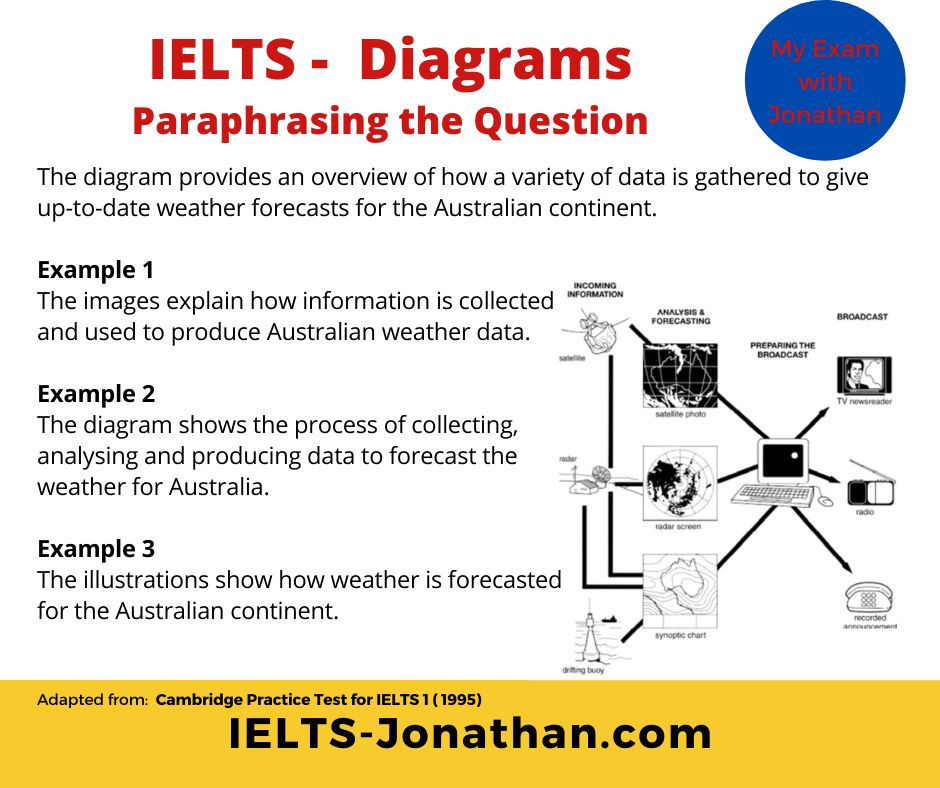
As you can see, all the information in the three sentences has been taken from the question, but it has not been copied.
If you do copy directly then those words are not used towards the word count and you will fail on TASK ACHIEVEMENT.
You need to write it in your own words.
In any Academic Task 1 question you can rewrite (paraphrase) the questions and this will be the first paragraph.
Well done. 🙂 Let’s move on!
Now consider the next section, the Overview.
Overview of the Process
The ‘ public band descriptors ’ state that to achieve a Band 6 or above for ‘ task response ’ the student must provide an overview in a Task 1. Without one, you are less likely to get a high score.
If you started planning at the beginning then writing a good overview will be a lot easier near the end.
Remember, the questions I’ve already asked you to consider.
These should be sufficient to provide the 2 sentences you need to construct the basic overview.
- Is there a beginning and an end?
- Circular process or linear with a start and a finish?
- Number of stages?
- Natural or a man-made process?
- Additions to the process?
- What is produced at the end
An IELTS diagram is different to a chart or table as there aren’t usually any key changes or trends to identify.
So, as there are no trends to comment on, you could mention, for example, the number of stages in the diagram and how it begins and ends instead.
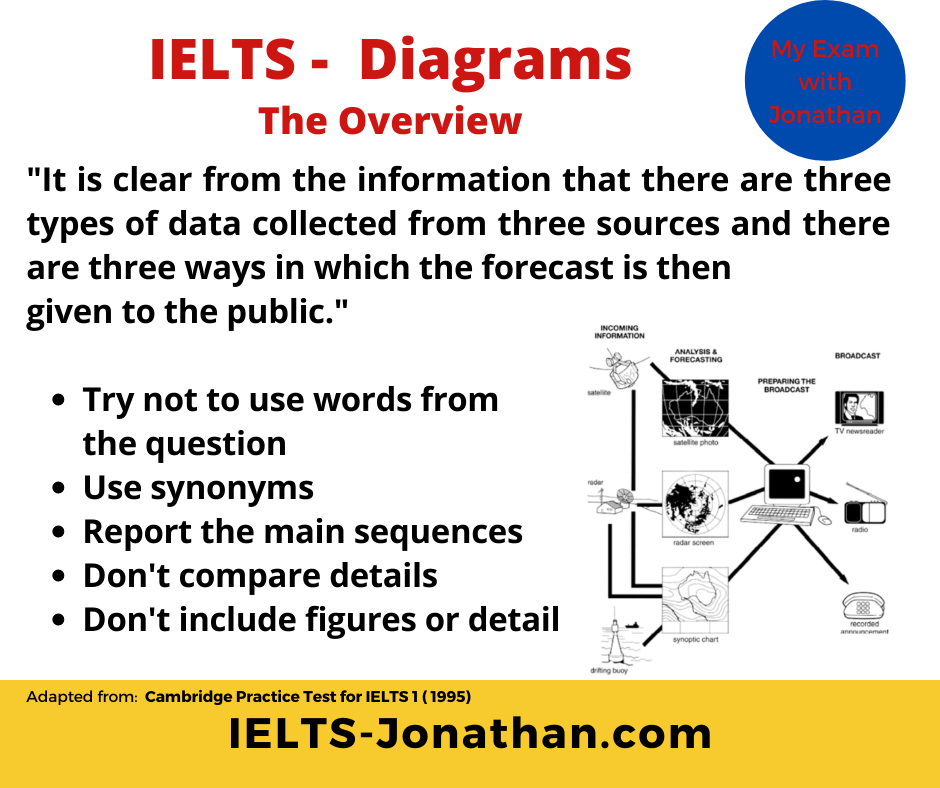
Providing the Detail
Now that you have completed paraphrasing the question and given the overview, the next stage is to explain the IELTS diagram in detail.
You can do this by:
- Stating what each stage does
- Is there an input or output?
- Is something added or taken away?
- Is there a relationship between stages?
Before you do this you need to consider the most suitable language that reflects the sophistication of the task.
Consider the most suitable language
In order to describe the process well there are two key aspects of language to be considered. These are sequencing and choice of grammar.
1) Time Connectors
You may need to describe series of events , for example, one taking place after the other, to connect your stages, you should sequence them using suitable ‘ time connectors ’.
By using these well, your writing instantly becomes more logical, cohesive, sophisticated and most importantly, more impressive to the examiner.
Here is my sample answer with the time connectors highlighted that simply describe from the start to the end of the process.
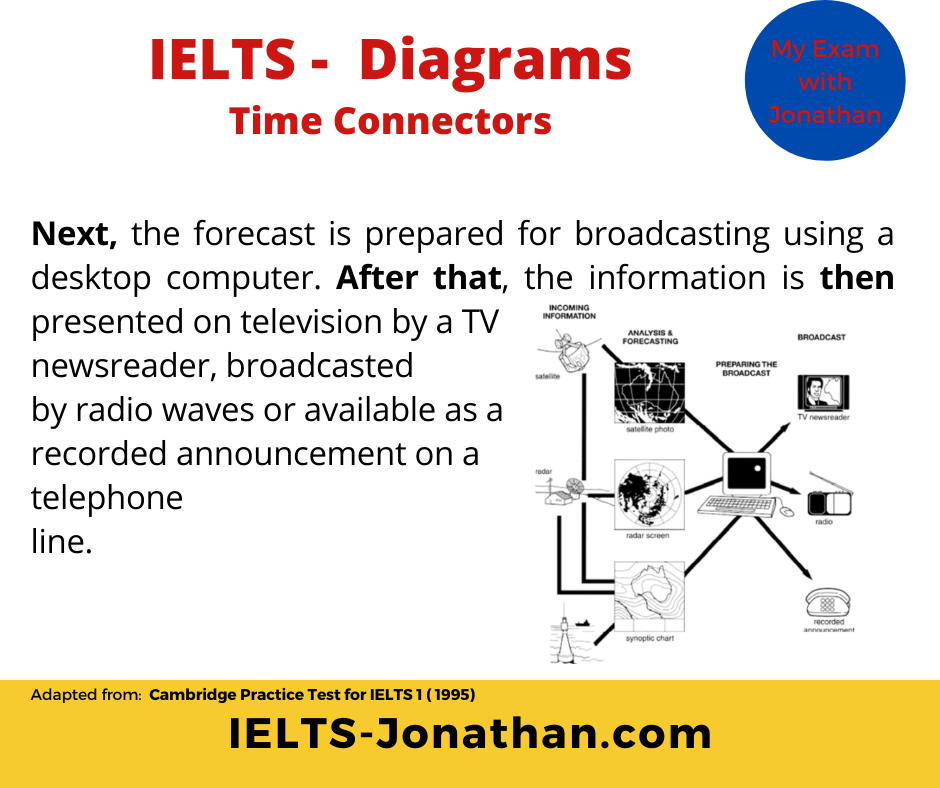
Other examples of sequencing Time Connectors are:
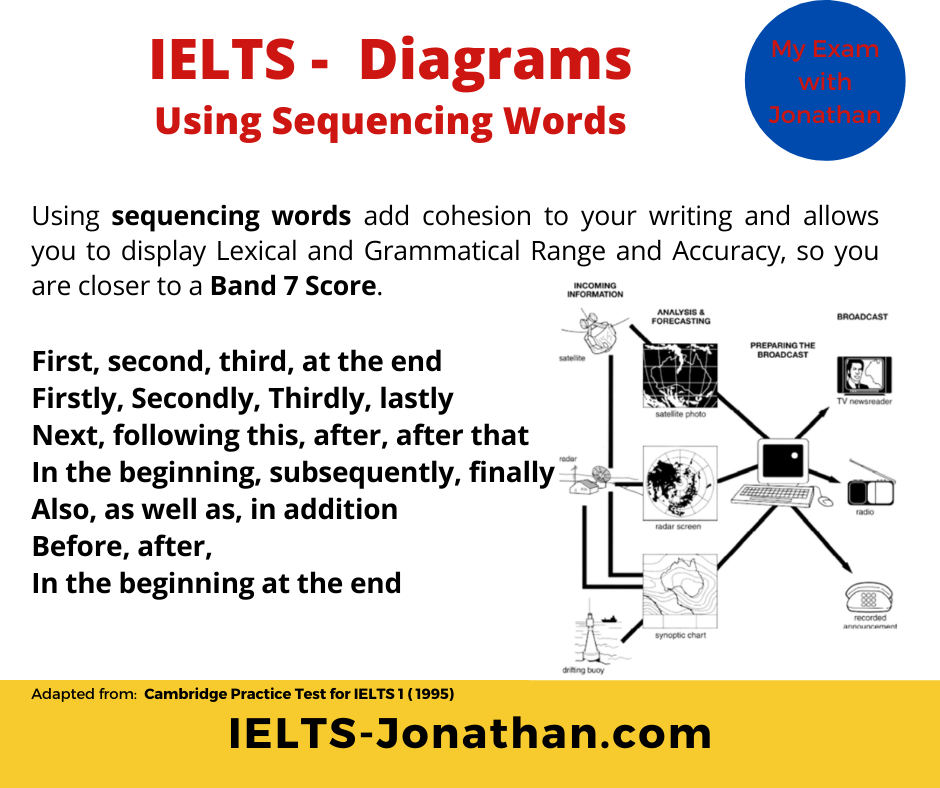
2) Passive Tense
When we describe an IELTS diagram, the focus is often on the activities in the process rather than the person .
So to describe the activities, use passive and not active grammar.
If you need to know more about the Passive voice you can read the review below, but the good news is
- The IELTS task will provide most of the verbs that you need to use
- Using the passive will avoid using the words as they appear in the text
- You only need to use the passive in the present simple tense – that’s the Present Simple Passive
Most sentences use this structure:
- Subject + Verb + Object
- A satellite collects weather pattern images. Weather patterns in the form of images are collected
In this active voice the satellite does the verb i.e. “the satellite is doing the collecting” .
In the passive voice,
- the object (weather patterns) becomes the subject,
- and the subject (the satellite) becomes the object.
- and the verb ‘to be’ and the past participle (or Verb 3) is also added.
A satellite collects weather pattern images. Weather patterns in the form of images are collected
The second example is far more appropriate for the IELTS Diagram question and far more sophisticated in choice of language.
Here’s my example. I’ve highlighted the passives in the text.
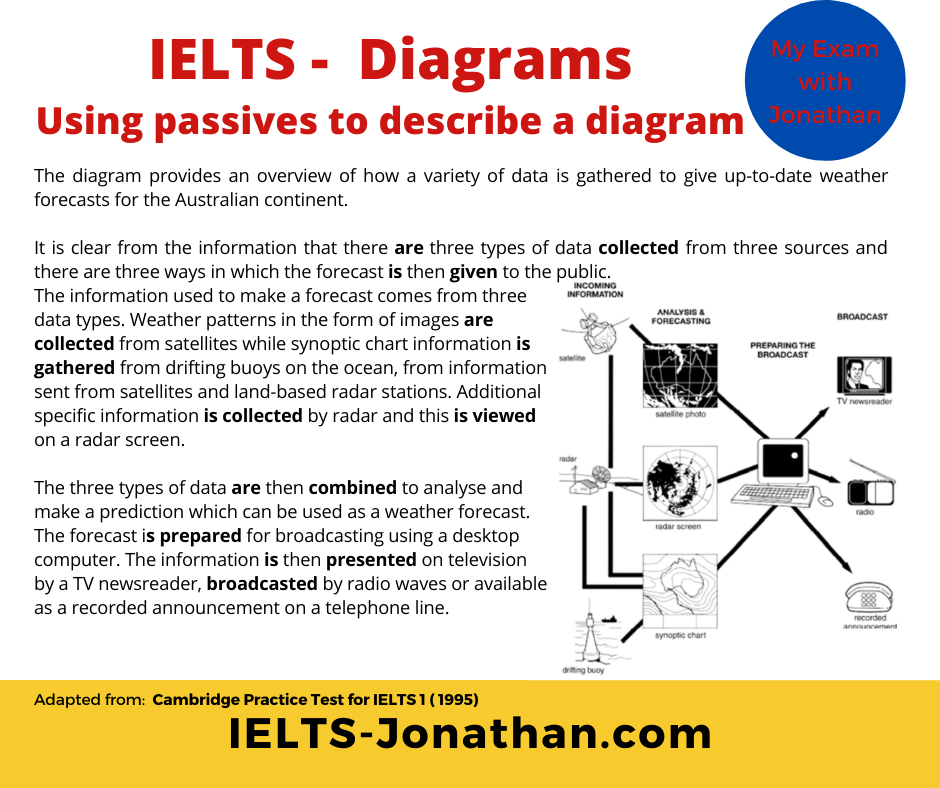
Varying your language
One final tip for a higher score is variation in language.
Occasionally, it may be appropriate just to use the same language that you are given in the IELTS process diagram to describe it, but you should try to vary it.
You may be able to use nouns from the diagram as your verbs.
For example, the noun broadcast near the end of the process becomes:
broadcasted by radio waves….
Is is okay to use ‘words’ from the question?
You may find you struggle to transform some verbs to nouns or think of synonyms for particular words.
Sometimes it’s ‘ okay ‘ to use words from the question because a word is ‘ so ‘ specific to the question, that an alternative cannot be used.
Take the word ‘ buoy ‘ for example.
My definition of this is
a plastic or rubber positioning device that floats on the surface of water, used for maritime navigation, position or measurement .
I don’t believe there is a suitable alternative I can use, it’s content specific.
Using this word from the question, would not penalise my writing.
Common Errors
A very basic error seen in Task 1 introduction is basic verb agreement.
Look at the two genuine examples below.
The diagrams shows
The diagram show
In both examples, it is unclear about the number of nouns discussed
Here is the correction:

Common Errors using the Present Simple Passive
- Make sure you practise the passive so you know exactly how to use it.
Also, as you will see from the description, it is more unusual to comment on who or what is doing the action so the ‘by….” phrase is often excluded.
- Singular or Plural
Notice these examples are incorrect.
Another example is using countable and uncountable nouns.
The pizza dough are ready The pizzas are ready.
This is a really common mistake In Task 1 writing!
Here are the corrections:
The pizza dough is ready (the material) The pizzas are ready (the individual pizzas)
Finally, check your Essay
Ideally, you need to allow 3 to 4 minutes at the end of the test to check and improve your writing.
Often students don’t do this because they spend the while 20 minutes writing.
It is far better to write for about 15 minutes and allow 5 minutes to check and improve your writing.
From my experience the points you should check for are:
- Are there any obvious spelling or punctuation errors?
- Are the verbs the correct tense?
Additionally, you should consider these questions, but if you followed my planning advice you should be ok.
- Do the verbs agree with the subject?
- Does the process make sense? Does it follow the visual?
- Is there any repetition in vocabulary?
- Could this be improved with synonyms?
- Have I written over 150 words?
- Have I organised the text into at least 3 paragraphs?
- Have I noticed only the obvious features from the diagram?
- Have I included the prominent features in the overview?
- Have I NOT included my personal opinion?
Once you have done this, be proud of the final product!
The diagram below shows how the Australian Bureau of Meteorology collects up-to-the-minute information on the weather in order to produce reliable forecasts.
Write at least 150 words.
Here’s my sample.
Sample Answer Diagrams.
The diagram provides an overview of how a variety of data is gathered to give up-to-date weather forecasts for the Australian continent.
It is clear from the information that there are three types of data collected from three sources and there are three ways in which the forecast is then given to the public.
The information used to make a forecast comes from three data types. Weather patterns in the form of images are collected from satellites while synoptic chart information is gathered from drifting buoys on the ocean, from information sent from satellites and land-based radar stations. Additional specific information is collected by radar and this is viewed on a radar screen. The three types of data are then combined to analyse and make a prediction which can be used as a weather forecast.
Next, the forecast is prepared for broadcasting using a desktop computer. After that, the information is then presented on television by a TV newsreader, broadcasted by radio waves or available as a recorded announcement on a telephone line.
Word Count 171

I hope you found this article useful and good luck with your preparation.
Please leave a comment for a reply.
I’m Jonathan
I’ve taught IELTS and University English in more than a dozen universities and schools around the world.
I’m a parent, traveller and passionate about language teaching and helping students achieve their dreams.
Whilst living in Austria or working in Asia, I run IELTS courses to help students get to where they want to be.
If you are serious about IELTS, connect with me to see how I can help you.

The Best Approach to Task 2 Writing
Paragraphing in Task 2 Writing
Strong Arguments for Task 2
Writing the Introduction
Writing a Line of Argument
Cohesion for Task 2 Writing
Writing – Benefits of a Foreign University Education
Reader Interactions
Was this helpful leave a comment :) cancel reply, let me help you get the ielts result you need.
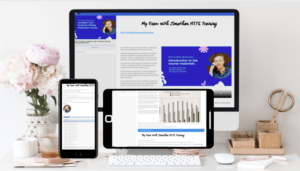
JUST WRITING FEEDBACK

Speaking Feedback
IELTS TRAINING
IELTS FEEDBACK
YOUR PRIVACY
TERMS AND CONDITIONS
- A Beginner’s Guide to IELTS
- Common Grammar Mistakes [for IELTS Writing Candidates]
Writing Correction Service
- Free IELTS Resources
- Practice Speaking Test
Select Page
IELTS Writing Task 1 Process Diagrams
Posted by David S. Wills | Apr 28, 2017 | IELTS Tips , Writing | 0
In the IELTS Writing Task 1 you may be asked to describe:
- line graphs
- flow charts
- process diagrams
For most of that list, you can use pretty similar language to tackle the question. Words like “ an increase ” or “to increase” can be used often throughout many of these Task 1 questions, but maps and process diagrams are different. I’ve shown you how to describe maps for the IELTS Writing Task 1 , so now here’s a guide to describing process diagrams.
Here is a video about describing process diagrams:
About The Author
David S. Wills
David S. Wills is the author of Scientologist! William S. Burroughs and the 'Weird Cult' and the founder/editor of Beatdom literary journal. He lives and works in rural Cambodia and loves to travel. He has worked as an IELTS tutor since 2010, has completed both TEFL and CELTA courses, and has a certificate from Cambridge for Teaching Writing. David has worked in many different countries, and for several years designed a writing course for the University of Worcester. In 2018, he wrote the popular IELTS handbook, Grammar for IELTS Writing and he has since written two other books about IELTS. His other IELTS website is called IELTS Teaching.
Related Posts
IELTS Expert Answers Common Questions
January 18, 2021
IELTS Topics: Globalisation
July 3, 2023
IELTS Topics: Advertising [With Speaking and Writing Sample Answers]
September 7, 2020
IELTS Listening Section 4 Advice and Practice
October 5, 2018
Leave a reply Cancel reply
Your email address will not be published. Required fields are marked *
This site uses Akismet to reduce spam. Learn how your comment data is processed .
Download my IELTS Books
Recent Posts
- British vs American Spelling
- How to Improve your IELTS Writing Score
- Past Simple vs Past Perfect
- Complex Sentences
- How to Score Band 9 [Video Lesson]
Recent Comments
- Francisca on Adverb Clauses: A Comprehensive Guide
- Mariam on IELTS Writing Task 2: Two-Part Questions
- abdelhadi skini on Subordinating Conjunction vs Conjunctive Adverb
- David S. Wills on How to Describe Tables for IELTS Writing Task 1
- anonymous on How to Describe Tables for IELTS Writing Task 1
- Lesson Plans
- Model Essays
- TED Video Lessons
- Weekly Roundup
IELTS Writing Task 1 Process Diagrams: Step-by-step method for a good score
Apart from statistical charts like line graphs and bar diagrams, it is also possible that you are asked to describe diagrams of machines and/or processes in IELTS Writing Task 1 .
IELTS Writing Task 1 Process Diagram questions expect candidates to explain how a device or activity works by deciphering the illustration.
IELTS Writing Task 1 Process Diagram Sample questions
WRITING TASK 1
You should spend about 20 minutes on this task.
Write at least 150 words.
Coal-powered plant
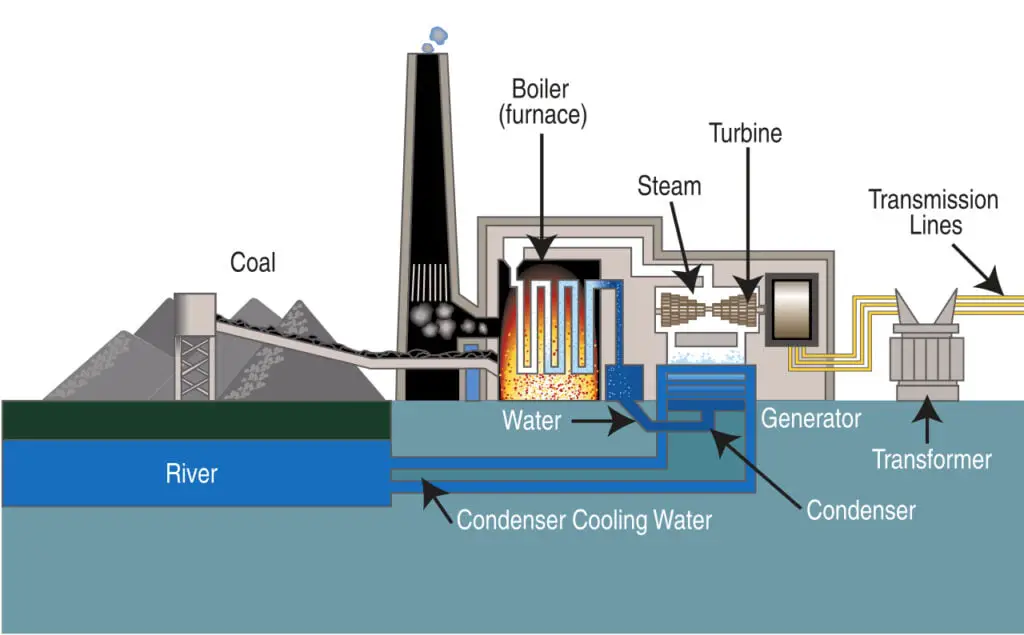
Wind turbine
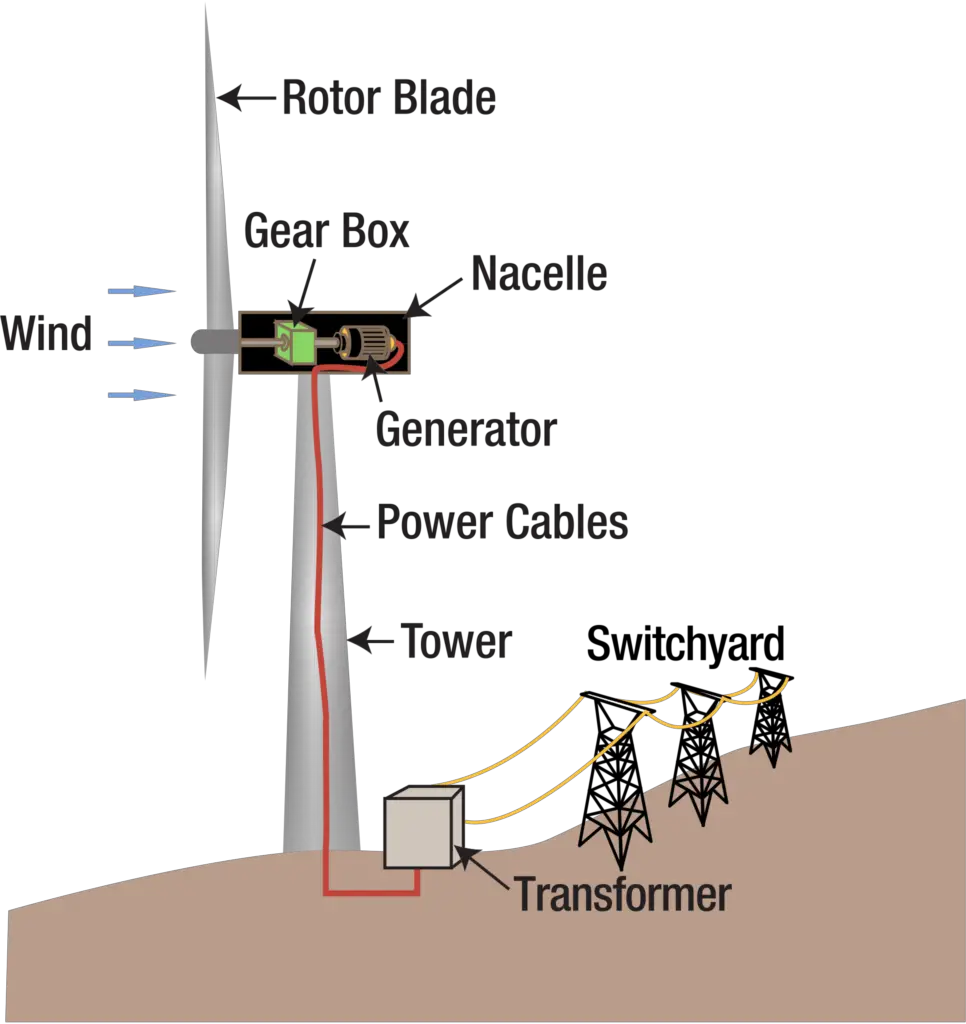
How earth’s atmosphere creates the greenhouse effect
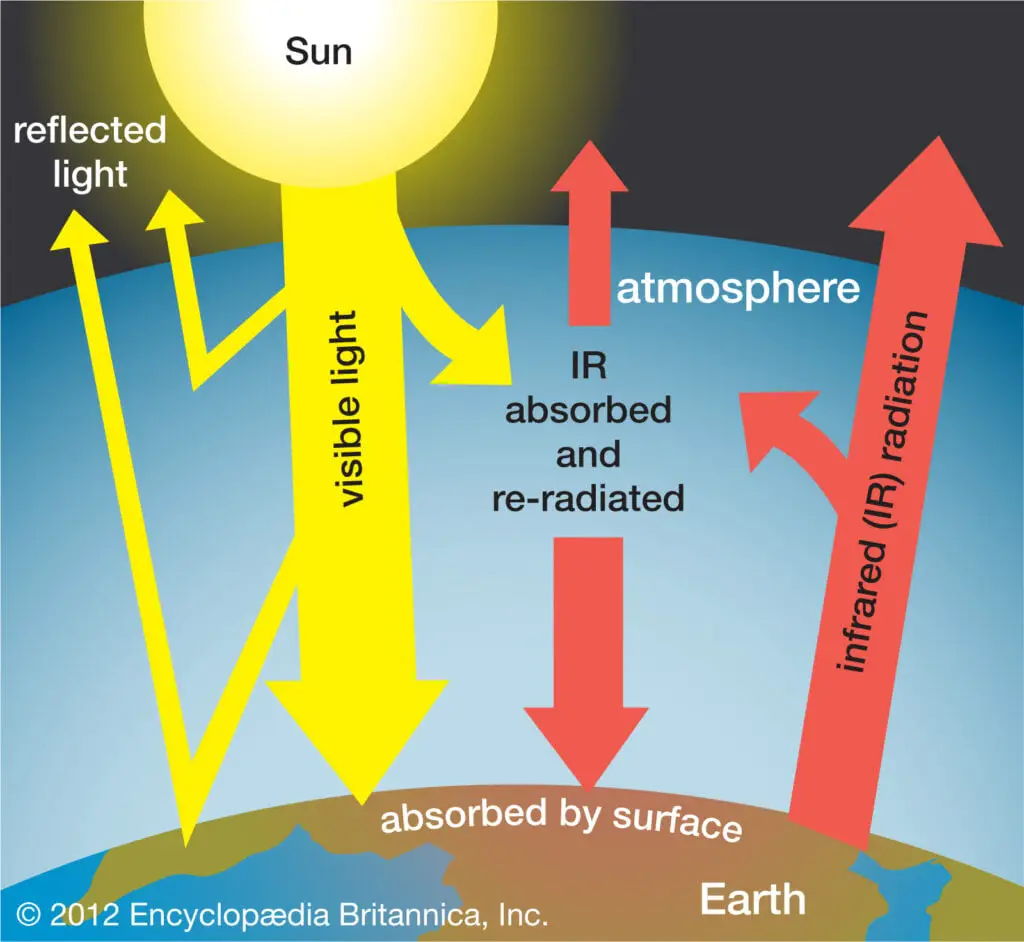
Analysis of IELTS Writing Task 1 Process Diagrams
To understand the operation shown in IELTS Writing Task 1 Process Diagrams, begin by figuring out the following things:
- the main sections of the diagram
- the order of stages or the relationships between different sections
- symbolic and lexical cues in the diagram
Let’s try this with one of the IELTS Writing Task 1 Process Diagram questions from before.
Writing Introductions
The Introduction paragraph for IELTS Writing Task 1 Process Diagrams is no different from other types of questions in IELTS Writing Task 1.
Click here » to view the lesson on writing an Introduction.
Overview for IELTS Writing Task 1 Process Diagrams
Akin to other types of graphics we get in IELTS Writing Task 1, there needs to be an overview (summary) paragraph for process diagrams. This paragraph should highlight the main feature of the diagram and the core mechanism of the action .
- Explain the entire process in a short consolidated sentence
- Mention the names of some of the major parts of the process without detailing the functions
Let’s look at an example for one of the IELTS Writing Task 1 Process Diagram questions from above.
IELTS Writing Task 1 Process Diagram Tips
The description of processes should be an objective reporting of facts deduced from the image in question.
Apart from the main requirements of the test , there are other things to consider.
Cause and effect
Since we have to establish a causal relationship between the various parts of the process , it is imperative to learn to compose sentences which show purpose.
The following words or phrases can be used to communicate cause and effect relationships.
Example sentences
- Coal is transported to the furnace in order to to provide fuel to the fire.
- Boiling water in the boiler gives rise to steam.
- The rotation of the turbines results in the generation of electricity.
- Power cables connect the nacelle with the transformer so that the generator transmits the current.
- The rotor blades spin due to the force of wind.
- Infrared radiation is trapped as a result of the earth’s atmosphere.
- The generator is connected to long distance power lines so as to supply electricity to the power grid.
Passive voice
While reporting on processes, it is more appropriate to emphasize the action itself rather than whoever is doing the action by using the passive voice . The subject who performs the action is irrelevant in sentences in the passive voice, and the action is highlighted.
Structures for passive voice
IELTS Writing Task 1 Process Diagram Sample answers
Next lesson:
IELTS Writing Task 1 Maps: The perfect format
Related Posts
Ielts writing task 1: highly effective tips for describing images, ielts writing task 1 tutorial: easy tips and tricks, ielts writing task 1 introduction paragraph: try this easy method, writing the perfect ielts writing task 1 overview.
quite helpful for describing the diagrams
Much obliged.
IELTS Academic Writing Task 1: Process Diagram with Model Answer

IELTS Academic Writing Task 1 questions can feature anything from diagrams to tables and graphs. To get you familiarized with these question types, let’s take a look at a process diagram practice question from IELTS Academic Writing Task 1, with a model band 9 essay .
To see why this essay is band 9, see our Band 9 essay with scorer commentary , and check out the official IELTS rubric for Task 1 (PDF) .
This particular prompt is a process diagram. Your approach to this diagram should be the same as your approach to any other Task 1 infographic Take a look at the information and think carefully. What is the best way to summarize the way the information is structured and the main points? From there, how can you best compare the most relevant pieces of information? Finally, how should you structure that summary and comparison? For more advice on how to approach this, see our article on IELTS Academic Task 1 paragraph structure , as well as our main page for IELTS sample questions and practice resources .
Try to do this prompt yourself. Then check out our band 9 model essay below the prompt and compare it to your own work to see how you did.
Model IELTS Academic Writing Task 1 Prompt: Process Diagram
The diagram below gives information about the recycling of glass and plastic containers.
Summarise the information by selecting and reporting the main features and make comparisons where relevant.
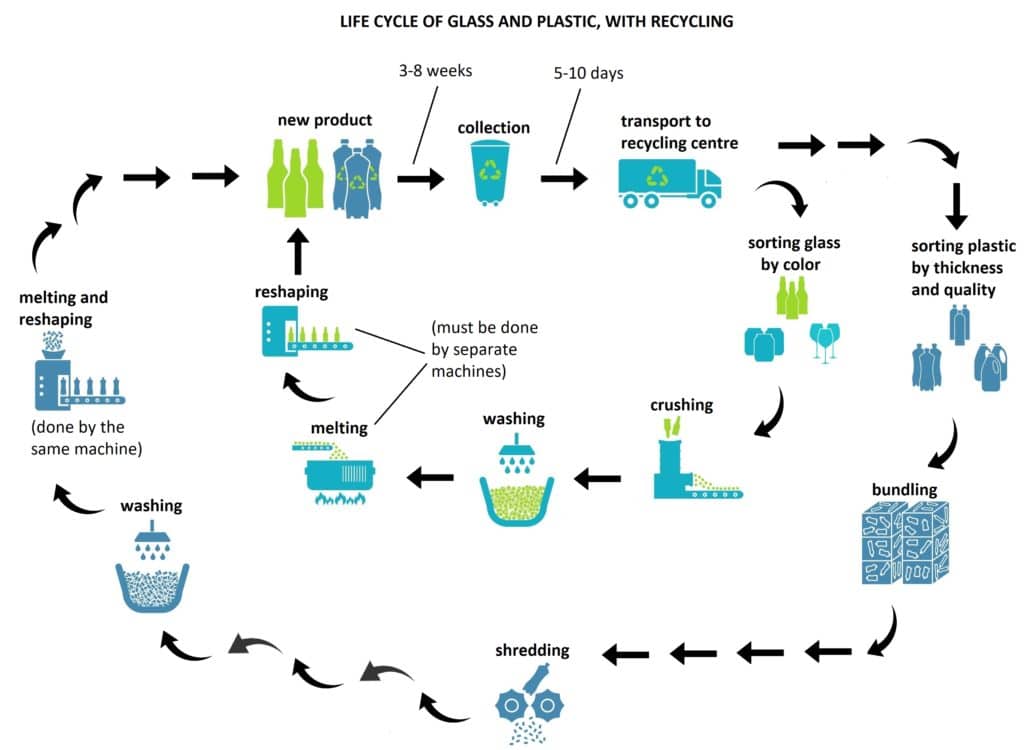
Model Essay
This flowchart shows the differences and similarities in the life cycles of glass and plastic containers, from creation and use to recycling and re-creation.
This diagram reveals both similarities and differences in the way that plastic and glass goods are made, recycled, and then made anew. The processes have more differences than similarities, but there are some more significant differences in the earlier stages of the recycling process.
The initial collection and transport of both goods are the same. However, after that, glass is sorted by color and may then be immediately crushed, while plastic is sorted by quality and must be bundled before it can be shredded.
Once the glass is crushed and the plastic is shredded, the processes become more similar again. At this point, both the glass and plastic pieces are washed, and then melted and reshaped into new products. These final steps are nearly identical, although the melting and reshaping of the glass must be done by two separate machines rather than one.
More Practice IELTS Academic Writing Task 1 Sample Questions with Model Essays
- IELTS Academic Writing Task 1: Map With Model Answer
- IELTS Academic Writing Task 1: Bar Chart With Model Answer
- IELTS Academic Writing Task 1: Line Graph with Model Answer
- IELTS Academic Writing Task 1: Pie Chart with Model Answer
- IELTS Academic Writing Task 1: Comparing two Graphics with Model Answer
And after that, you can hungrily seek out knowledge on the entire IELTS Writing section, starting with Magoosh’s handy complete IELTS Writing guide .

David is a Test Prep Expert for Magoosh TOEFL and IELTS. Additionally, he’s helped students with TOEIC, PET, FCE, BULATS, Eiken, SAT, ACT, GRE, and GMAT. David has a BS from the University of Wisconsin-Eau Claire and an MA from the University of Wisconsin-River Falls. His work at Magoosh has been cited in many scholarly articles , his Master’s Thesis is featured on the Reading with Pictures website, and he’s presented at the WITESOL (link to PDF) and NAFSA conferences. David has taught K-12 ESL in South Korea as well as undergraduate English and MBA-level business English at American universities. He has also trained English teachers in America, Italy, and Peru. Come join David and the Magoosh team on Youtube , Facebook , and Instagram , or connect with him via LinkedIn !
View all posts
More from Magoosh
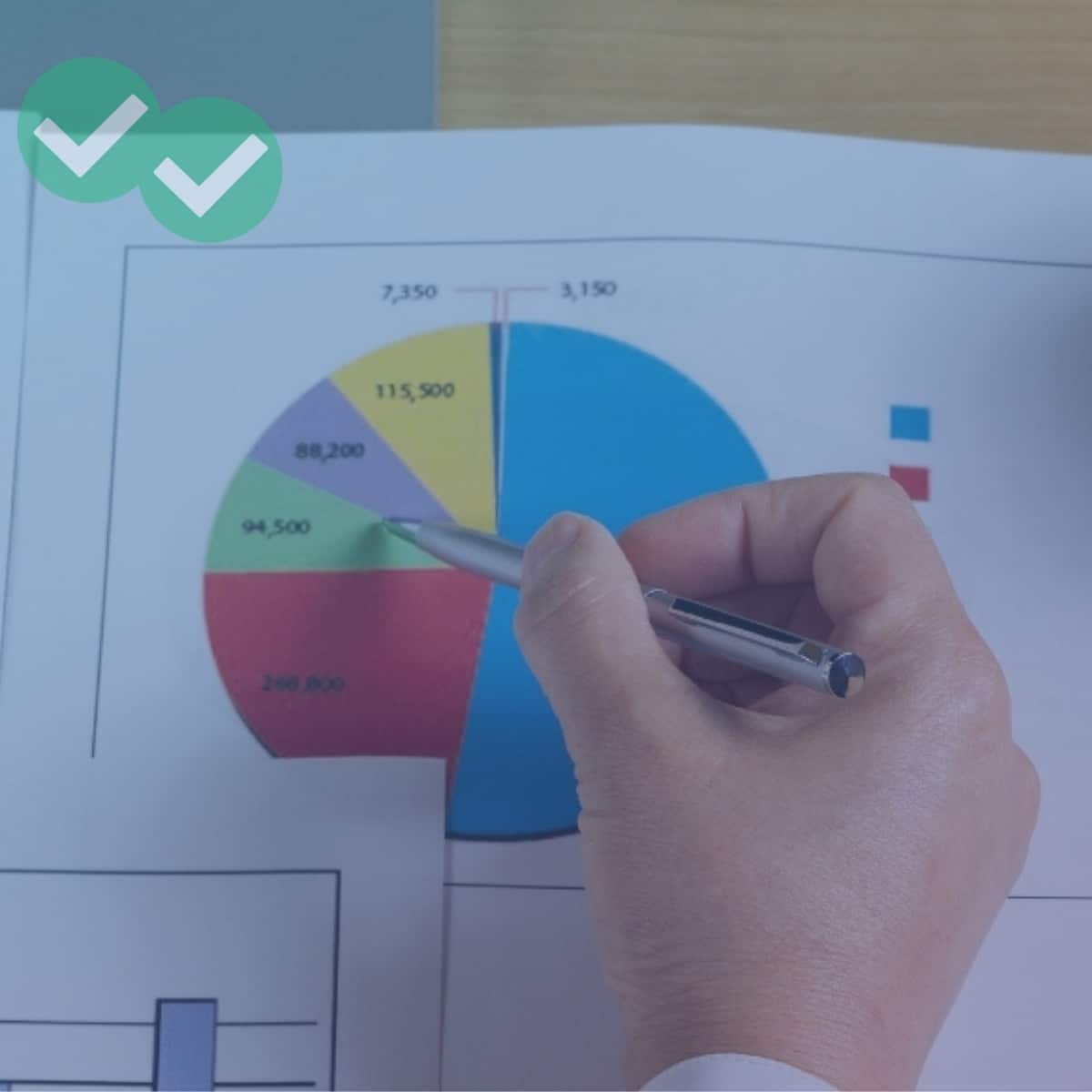
One response to “IELTS Academic Writing Task 1: Process Diagram with Model Answer”
The flow chart illustrates the life cycle and process of recycling glass and plastic bottles. Overall, the steps involved for both products are the same, with minute changes.
Firstly, the new product usage and collection of plastic and glass bottles take 3–8 weeks. Then, transporting them to recycling centres takes about 5–10 days. Next, they are sorted in recycling centres. Glass is sorted by colour, while plastic bottles are sorted by thickness and quality. After this, glass is crushed in a crusher, while plastic recycling involves an additional step, i.e., bundling, and then shredding is done. All the pieces are then washed in a washer. Finally, melting and reshaping are done. However, for glass, it is done by two separate machines, while it is done by the same machine for plastic. At the end, the product is ready to be used commercially and recycled again. In this way, making things economical and environmentally friendly.
Leave a Reply Cancel reply
Your email address will not be published. Required fields are marked *
Welcome Guest!
- IELTS Listening
- IELTS Reading
- IELTS Writing
- IELTS Writing Task 1
- IELTS Writing Task 2
- IELTS Speaking
- IELTS Speaking Part 1
- IELTS Speaking Part 2
- IELTS Speaking Part 3
- IELTS Practice Tests
- IELTS Listening Practice Tests
- IELTS Reading Practice Tests
- IELTS Writing Practice Tests
- IELTS Speaking Practice Tests
- All Courses
- IELTS Online Classes
- OET Online Classes
- PTE Online Classes
- CELPIP Online Classes
- Free Live Classes
- Australia PR
- Germany Job Seeker Visa
- Austria Job Seeker Visa
- Sweden Job Seeker Visa
- Study Abroad
- Student Testimonials
- Our Trainers
- IELTS Webinar
- Immigration Webinar
IELTS Writing Task 1 Process Chart 2024 – Process Diagram with Sample Answers
Updated On Mar 05, 2024

Share on Whatsapp
Share on Email
Share on Linkedin
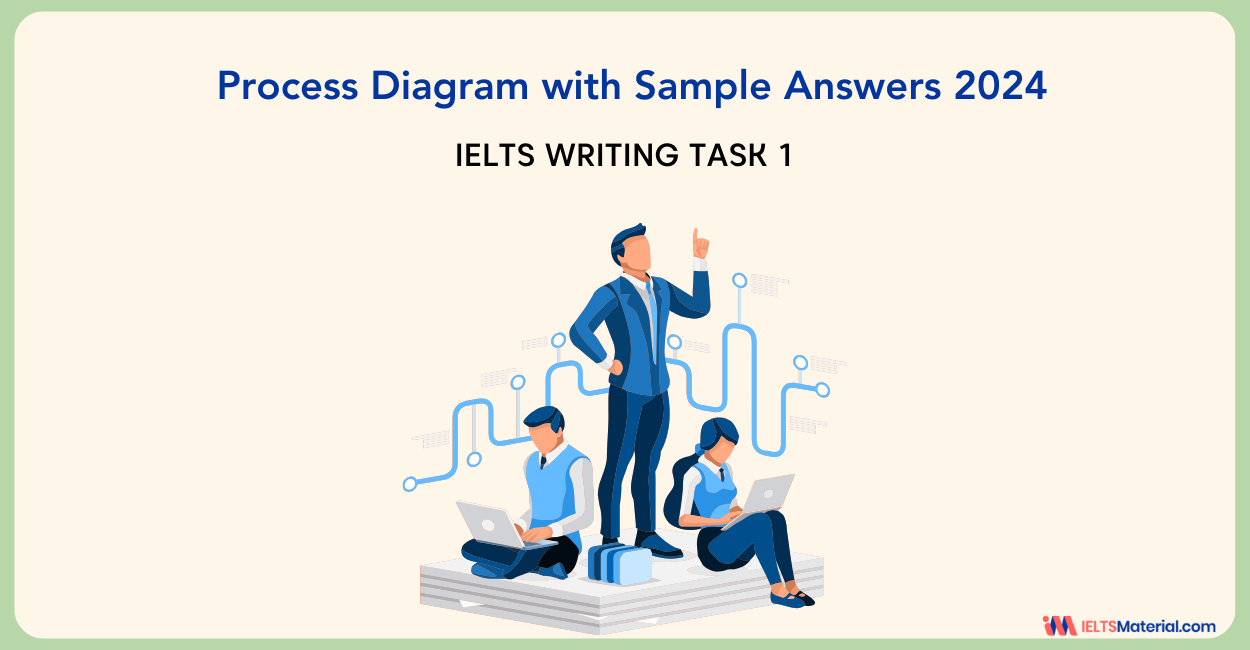
Effective IELTS Essay Connectors for Writing Task 2 & Task 1
Writing Task 1 is different for IELTS Academic and General exams. While the Academic exam is based on report writing based on charts, graphs, diagrams and processes, the General counterpart is a letter-writing task. So, in this article, we are going to discuss a crucial type of question that is given in Academic test, which is, Process chart.
What is an IELTS Process Chart?
When we talk about the IELTS Academic writing task 1 , the process chart is one of the most commonly asked questions in the exam. A IELTS process chart is a graphical/pictorial illustration of a cycle or a sequence of events that occur in a process. Whenever the IELTS Academic Writing task 1 asks you to elucidate a process chart, you are expected to depict the chart and explain the sequence provided in the chart. You are scored on the basis of your comprehension of the process chart, the way you explain it, the aptness of the vocabulary , the construction of the sentences, and the soundness of grammatical usage .
Types of IELTS Process Charts
There are two types of IELTS process charts that are asked in Academic Writing task 1. The first one is a Natural process , and the second one is the Manufacturing process.
The Natural process Chart
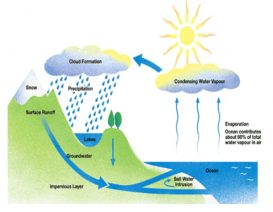
The Natural process chart talks about a naturally occurring phenomenon, for example, the Hydrological cycle , Carbon cycle, Respiration in plants, etc.
The Manufacturing process chart
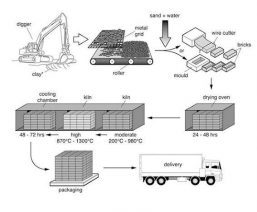
The Manufacturing process depicts a man-made process, for example, manufacturing pulp and paper , glass manufacturing process, steel manufacturing process and so on.
How to attempt a IELTS Process Chart Question?
A process chart question should first be understood and observed well. Once the chart is understood completely, the organization of the idea should be in a specific way keeping the word limit in consideration.
Introduction : First of all, the topic of the process chart should be introduced and paraphrased so that the reader has a fair idea about what the process chart is going to be about.
Overview : A brief extract of the process chart should be written such that it gives an overview of the chart. The number of steps could be mentioned in the overview. For example, you may mention that there are seven steps in the manufacturing of paper.
Body paragraphs: should focus on briefing the events of the process. This step could take 3-4 paragraphs, completely subjected to the events depicted in the diagram.
Don’t write a Conclusion : There is no summarization or inference made in the process chart questions. Hence, it must not be used.
In what tense should you write the IELTS Process Chart depiction?
The first and the foremost step that comes while deciding the tense in which the process is to be written is the uniformity. If the depiction is in present tense, ensure the uniformity throughout the text, and same goes for other tenses, i.e. past and at times in future tense (questions on projections and assumptions, etc.) Generally, when the questions involve a graphical depiction wherein the past years are mentioned, use past tense. When the question is to explain a process, for example in the following example, make use of present tense. When the question talks about the projection or estimation, let’s say 2050, then use future tense. Usage of tenses should be intelligently made.
What kind of vocabulary should be used in a process chart?
Talking about the vocabulary of the process chart task, there is a dedicated list of vocabulary that you have to use. Right from specific verbs to adverbs to adjectives , words should be chosen specifically while explaining a process chart such as creates, repeats, firstly, subsequently, sequentially, meanwhile, cyclical, linear, etc.
For example:
- This cycle repeats itself.
- Firstly, the raw materials are gathered followed by their processing. Meanwhile , the temperature of the furnace is increased.
- This process is a linear process that begins with the gathering of raw materials and finishes with the goods that are ready to be used.
The voice used in the texts
The voice used in explaining the process chart also plays a notable role. For a natural process, an active voice is used while a passive voice is used in the depiction of a Manufacturing process chart.
Now, we will make use of all that we learnt in the example given below and see how easy and appealing the process chart becomes.
Sample Example for Process Chart

Report Plan
Paraphrase : Illustrate; the recycling process of waste glass bottles.
Overview/Summary : Mention the three stages in the recycling process.
Paragraph 3: Describe the first and second stages of the recycling process.
Paragraph 4: sent to a glass factory; crushed into pieces; the process continues to get burnt; coupling of molten glass and new liquid glass.
Paragraph 5: Describe the final stage of the recycling process
Sample Answer
The diagram illustrates the process of recycling waste glass bottles.
We can observe from the diagram that there are three main stages in the recycling process, beginning with gathering the wasted glass bottles, the recycling of these bottles, and ending with the delivery of new products.
Firstly, wasted glass bottles are gathered at a collecting point . It is then transported to a recycling center/ cleaning plant by truck. Next, these are cleaned using high-pressure water to eliminate the dust and other substances before being classified into three kinds of bottles according to their color, such as brown, green and clear.
Later, these bottles are sent to a glass factory to be crushed into smaller pieces. The process continues wherein those pieces are burnt in a specific furnace at a high temperature of 600c – 800c to become molten glass. The recycled molten glass and new liquid glass are coupled together and poured into a glass mould to produce new bottles.
The new bottles are then filled with drinks, and the entire process of recycling glass concludes after these filled bottles are delivered to the supermarket .
Tips to Write IELTS Writing Task 1- Process Diagram
There are few tips, which have to be borne in mind while writing a process diagram.
Understand the marking criteria
You must know the marking scheme of this particular section. If you know on what basis the IELTS scores are given, you will be able to answer the question appropriately and also fulfil the expectations of the examiner.
Tips for paraphrasing the question
Paraphrasing is one of the key skills required in IELTS . Paraphrasing is nothing but replacing the words given in the question with synonyms . This may not be used only in the introduction, but also can be used in the sentences across the paragraphs. This will help you to achieve the desired band score.
Check your writing
Towards the end of the test, you will be given a few minutes to check the answers that you have written. Utilize this time to check for spelling mistakes , silly mistakes and grammar. Only accurate answers will help you achieve the desired result.
Get evaluated for FREE!
Got a quick report in your mind for this question. Don’t hesitate to post the same in our comment section. We will evaluate the report/letter and email you the band score & our trainer’s comments. And, this service is entirely free.
Also check :
- IELTS Writing task 1 tips
- IELTS Writing Answer sheet
- IELTS map vocabulary
- IELTS Writing Task 1 Connectors
- IELTS 2024 Study Plan for 1 month (30 Days) / 15 Days / 7 Days
Practice IELTS Writing Task 1 based on report types

Band 9 IELTS Vocabulary for Academic Writing Task 1 + PDF
Janice Thompson
Soon after graduating with a Master’s in Literature from Southern Arkansas University, she joined an institute as an English language trainer. She has had innumerous student interactions and has produced a couple of research papers on English language teaching. She soon found that non-native speakers struggled to meet the English language requirements set by foreign universities. It was when she decided to jump ship into IELTS training. From then on, she has been mentoring IELTS aspirants. She joined IELTSMaterial about a year ago, and her contributions have been exceptional. Her essay ideas and vocabulary have taken many students to a band 9.
Explore other sample Process Diagrams
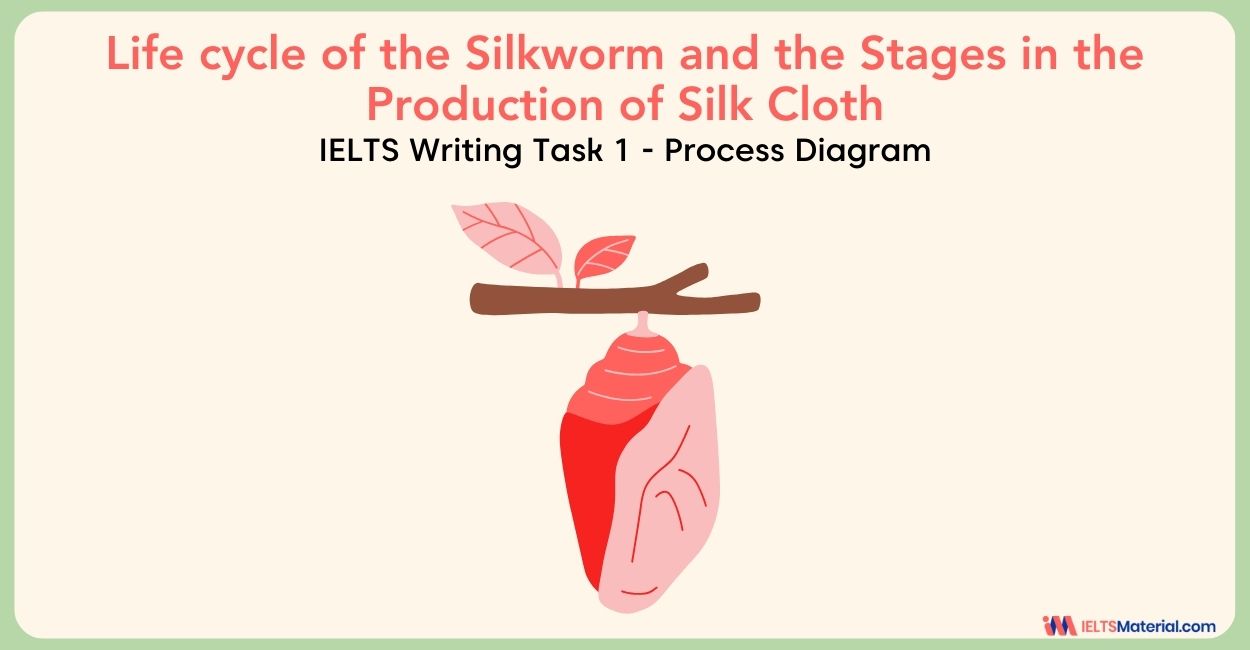
Courtney Miller

Post your Comments
Recent articles.
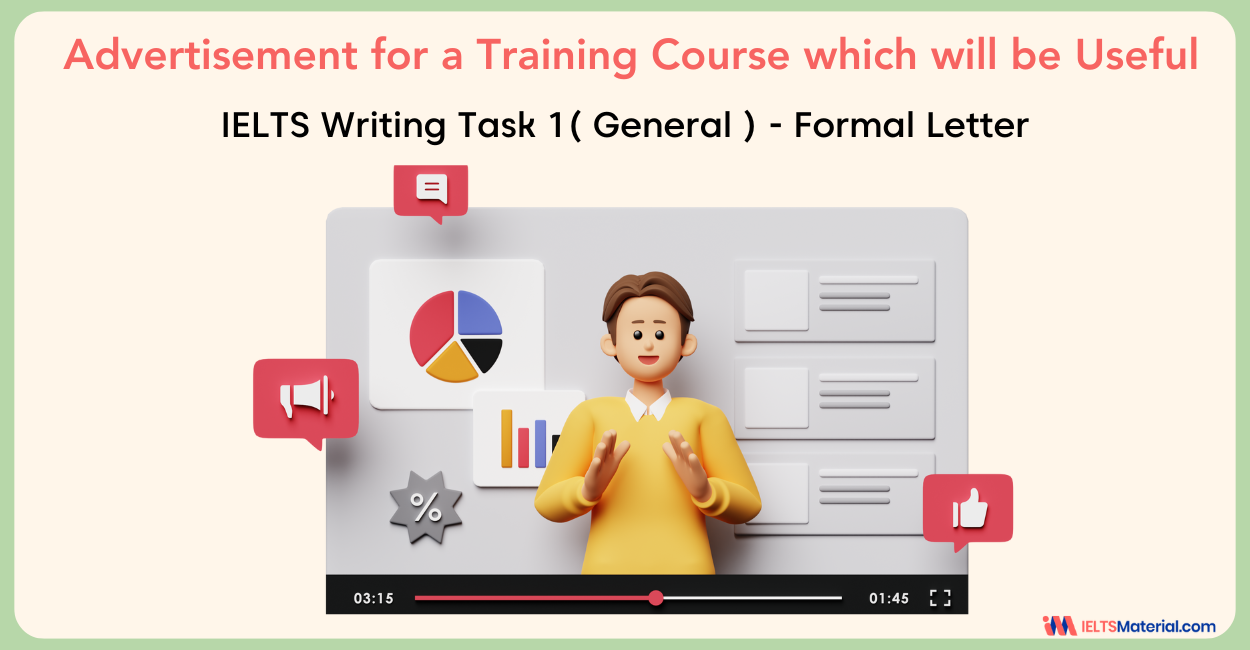
Akanksha Tripathi

Raajdeep Saha
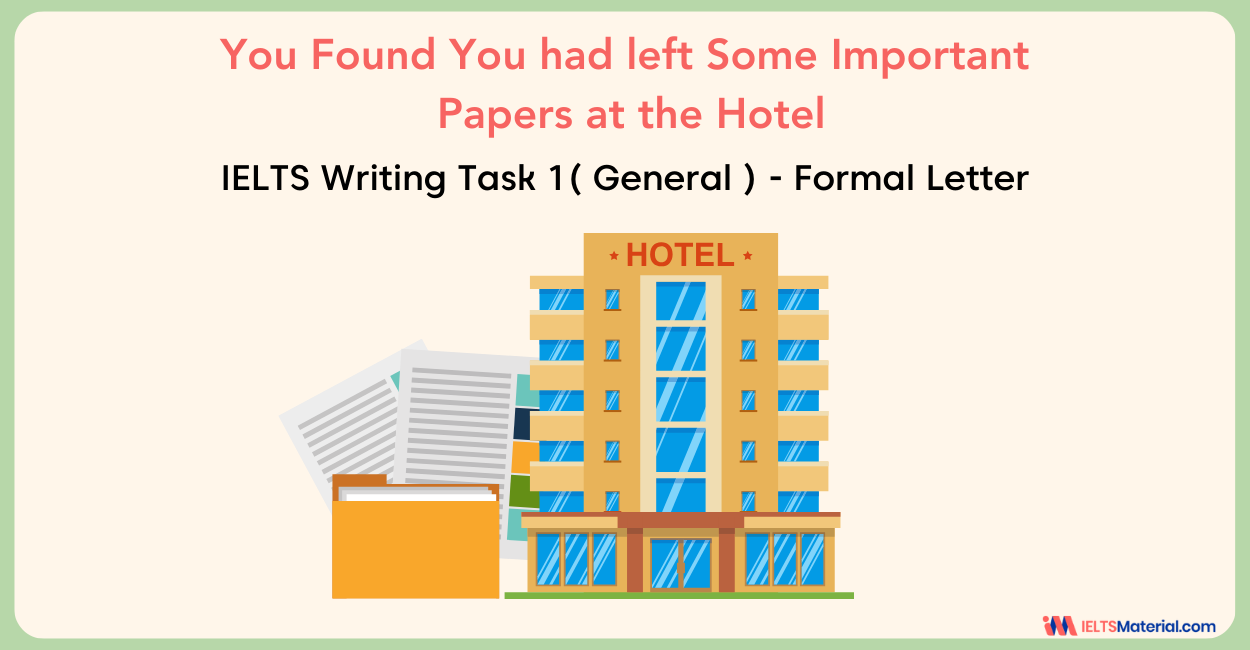
Our Offices
Gurgaon city scape, gurgaon bptp.
Please enter Email ID
Please enter phone number
Application
Please select any one
Already Registered?
Select a date
Please select a date
Select a time (IST Time Zone)
Please select a time
Mark Your Calendar: Free Session with Expert on
Which exam are you preparing?
Great Going!
Get a free session from trainer

Do You Know The 7 Steps Of The Writing Process?
How much do you know about the different stages of the writing process? Even if you’ve been writing for years, your understanding of the processes of writing may be limited to writing, editing, and publishing.
It’s not your fault. Much of the writing instruction in school and online focus most heavily on those three critical steps.
Important as they are, though, there’s more to creating a successful book than those three. And as a writer, you need to know.
The 7 Steps of the Writing Process
Read on to familiarize yourself with the seven writing process steps most writers go through — at least to some extent. The more you know each step and its importance, the more you can do it justice before moving on to the next.
1. Planning or Prewriting
This is probably the most fun part of the writing process. Here’s where an idea leads to a brainstorm, which leads to an outline (or something like it).

Whether you’re a plotter, a pantser, or something in between, every writer has some idea of what they want to accomplish with their writing. This is the goal you want the final draft to meet.
With both fiction and nonfiction , every author needs to identify two things for each writing project:
- Intended audience = “For whom am I writing this?”
- Chosen purpose = “What do I want this piece of writing to accomplish?”
In other words, you start with the endpoint in mind. You look at your writing project the way your audience would. And you keep its purpose foremost at every step.
From planning, we move to the next fun stage.
2. Drafting (or Writing the First Draft)
There’s a reason we don’t just call this the “rough draft,” anymore. Every first draft is rough. And you’ll probably have more than one rough draft before you’re ready to publish.
For your first draft, you’ll be freewriting your way from beginning to end, drawing from your outline, or a list of main plot points, depending on your particular process.
To get to the finish line for this first draft, it helps to set word count goals for each day or each week and to set a deadline based on those word counts and an approximate idea of how long this writing project should be.
Seeing that deadline on your calendar can help keep you motivated to meet your daily and weekly targets. It also helps to reserve a specific time of day for writing.
Another useful tool is a Pomodoro timer, which you can set for 20-25 minute bursts with short breaks between them — until you reach your word count for the day.
3. Sharing Your First Draft
Once you’ve finished your first draft, it’s time to take a break from it. The next time you sit down to read through it, you’ll be more objective than you would be right after typing “The End” or logging the final word count.
It’s also time to let others see your baby, so they can provide feedback on what they like and what isn’t working for them.
You can find willing readers in a variety of places:
- Social media groups for writers
- Social media groups for readers of a particular genre
- Your email list (if you have one)
- Local and online writing groups and forums
This is where you’ll get a sense of whether your first draft is fulfilling its original purpose and whether it’s likely to appeal to its intended audience.
You’ll also get some feedback on whether you use certain words too often, as well as whether your writing is clear and enjoyable to read.
4. Evaluating Your Draft
Here’s where you do a full evaluation of your first draft, taking into account the feedback you’ve received, as well as what you’re noticing as you read through it. You’ll mark any mistakes with grammar or mechanics.
And you’ll look for the answer to important questions:
- Is this piece of writing effective/ Does it fulfill its purpose?
- Do my readers like my main character? (Fiction)
- Does the story make sense and satisfy the reader? (Fiction)
- Does it answer the questions presented at the beginning? ( Nonfiction )
- Is it written in a way the intended audience can understand and enjoy?
Once you’ve thoroughly evaluated your work, you can move on to the revision stage and create the next draft.
More Related Articles
How To Create An Em Dash Or Hyphen
Are You Ready To Test Your Proofreading Skills?
How To Write A Book For Kindle About Your Expertise Or Passion
5. Revising Your Content
Revising and editing get mixed up a lot, but they’re not the same thing.
With revising, you’re making changes to the content based on the feedback you’ve received and on your own evaluation of the previous draft.
- To correct structural problems in your book or story
- To find loose ends and tie them up (Fiction)
- To correct unhelpful deviations from genre norms (Fiction)
- To add or remove content to improve flow and/or usefulness
You revise your draft to create a new one that comes closer to achieving your original goals for it. Your newest revision is your newest draft.
If you’re hiring a professional editor for the next step, you’ll likely be doing more revision after they’ve provided their own feedback on the draft you send them.
Editing is about eliminating errors in your (revised) content that can affect its accuracy, clarity, and readability.

By the time editing is done, your writing should be free of the following:
- Grammatical errors
- Punctuation/mechanical and spelling errors
- Misquoted content
- Missing (necessary) citations and source info
- Factual errors
- Awkward phrasing
- Unnecessary repetition
Good editing makes your work easier and more enjoyable to read. A well-edited book is less likely to get negative reviews titled, “Needs editing.” And when it comes to books, it’s best to go beyond self-editing and find a skilled professional.
A competent editor will be more objective about your work and is more likely to catch mistakes you don’t see because your eyes have learned to compensate for them.
7. Publishing Your Final Product
Here’s where you take your final draft — the final product of all the previous steps — and prepare it for publication.
Not only will it need to be formatted (for ebook, print, and audiobook), but you’ll also need a cover that will appeal to your intended audience as much as your content will.
Whether you budget for these things or not depends on the path you choose to publish your book:
- Traditional Publishing — where the publishing house provides editing, formatting, and cover design, as well as some marketing
- Self-Publishing — where you contract with professionals and pay for editing, formatting, and cover design.
- Self-Publishing with a Publishing Company — where you pay the company to provide editing, formatting, and cover design using their in-house professionals.
And once your book is live and ready to buy, it’s time to make it more visible to your intended audience. Otherwise, it would fail in its purpose, too.
Are you ready to begin 7 steps of the writing process?
Now that you’re familiar with the writing process examples in this post, how do you envision your own process?
While it should include the seven steps described here, it’ll also include personal preferences of your own — like the following:
- Writing music and other ambient details
- Writing schedule
- Word count targets and time frames
The more you learn about the finer details of the writing process, the more likely you are to create content your readers will love. And the more likely they are to find it.
Wherever you are in the process, our goal here is to provide content that will help you make the most of it.

Leave a Comment Cancel reply
This site uses Akismet to reduce spam. Learn how your comment data is processed .

IELTS academic writing task 1: process diagram
Model answer for the production of electricity..
Updated: February 2024
In the last lesson about process diagrams, I looked at the grammar and vocabulary needed to write about them. Click here to see the grammar needed . This type of task often appears in IELTS academic writing task 1, so I advise practicing this before the exam.
The passive voice is used when describing a process and you will also need sequencers to show the step by step process. The structure needed is: an introduction, an overview and 2 body paragraphs. Word count is 150 words minimum, aim for around 160 to 180 words.
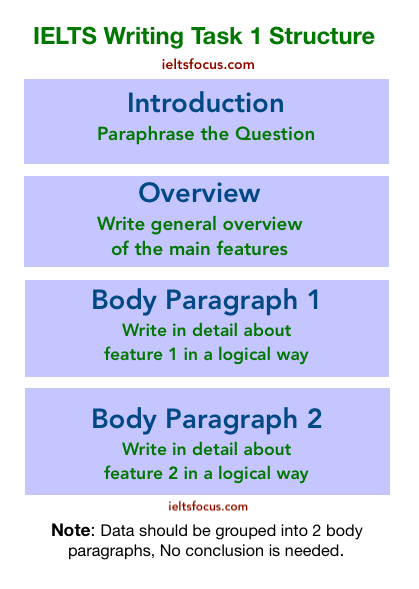
You will notice that the task question in academic task 1 says:
Summarise the information by selecting and reporting the main features, and make comparisons where relevant.
You do not have to write about every single feature on the chart or diagram. Pick out the main features and also use the language of comparisons. In the case of a process diagram, it is pretty straightforward. Just describe the process using active and passive and sequencers . Check the grammar needed here in this lesson.
In the task below, I used a process diagram from the Cambridge IELTS 12 Academic book . I advise only using official IELTS material when practicing as there is a lot of fake material out there with IELTS. You can get this book online at Amazon.
The diagram below shows how geothermal energy is used to produce electricity.

Model Answer:
The diagram illustrates the process by which geothermal energy is used in the production of electricity.
Overall, there are five steps in the process, starting from pumping down cold water into the geothermal zone, to producing electricity from the generator which is then sent into the electrical grid.
In the first step, cold water is pumped down 4.5 km underground through the injection well. Next, the water is injected into the geothermal zone, where hot rocks heat the water up as it passes through the Earth. Once the water has been heated up, it enters the production well and is then pumped up to the ground and into the condenser.
The last two stages are carried out above ground at the power plant. First of all, steam is produced from the hot water in the condenser. In the following step, the steam passes into the turbine and makes it spin. Finally, the generator, which is powered by the turbine, produces electricity where it is then transferred into the electric grid via power lines.
Analysis of the Model Answer
Green = active Red = passive Bold = Sequencers Purple= relative clauses
In the first step, cold water is pumped down 4.5 km underground through the injection well. Next, the water is injected into the geothermal zone, where hot rocks heat the water up as it passes through the Earth. Following this, once the water has been heated up , it enters the production well and is then pumped up to the ground and into the condenser.
Use Sequencers when describing a process, here are some examples:
- To begin with / starting from
- in the first step
- in the next stage
- next / then
- following this
- after that
- subsequently
- finally / lastly
Notice how I have grouped the information:
Main body 1 – I wrote about the process underground. Main body 2 – I wrote about the process above ground.
Here is a useful link for the rules around using active and passive grammar: https://webapps.towson.edu/ows/activepass.htm
Any questions? comment below.
3 thoughts on “IELTS academic writing task 1: process diagram”
Thank you so much for such a sincere contribution to our success in IELTS. GOD BLESS YOU .
Leave a Comment Cancel reply

Want to create or adapt books like this? Learn more about how Pressbooks supports open publishing practices.
1.5 Writing Processes
Just as we use design processes to creatively solve complex problems, we use writing processes to create complex documents. In both cases, there are steps or stages, but we don’t always proceed directly from one step to next in a chronological manner. These processes are often iterative, meaning we might return to previous stages in the process from time to time. The more complex the task, the more iteration might be needed. Examine the Design Process ( Figure 1.5.1 ) and Writing Process ( Figure 1.5.2 ) diagrams below. What similarities and differences can you see in these two processes?
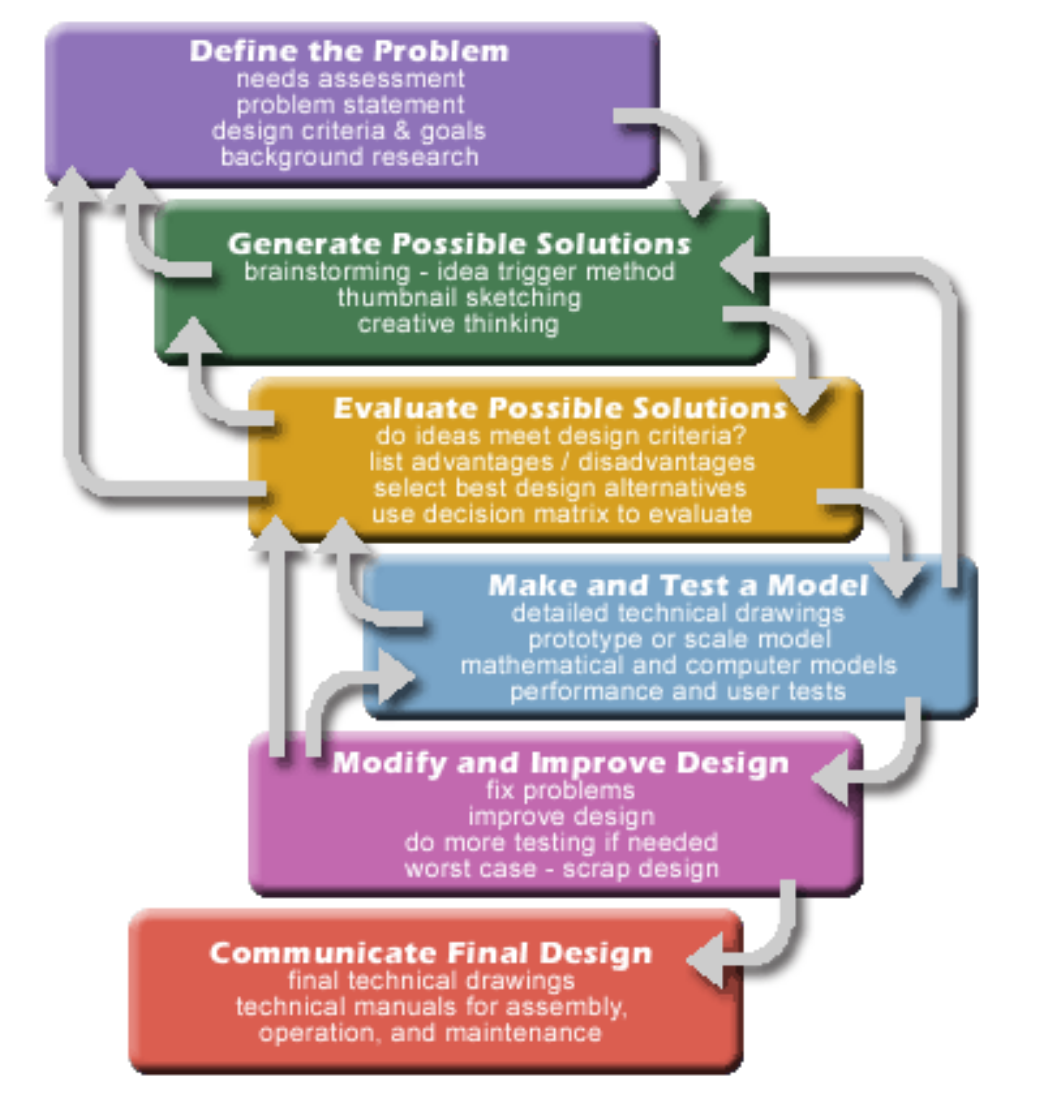
You may have come across a “writing process” before, and it may or may not have worked well for you. There is no single process that works for everyone in every situation. The key is to recognize the various steps in a typical writing process and figure out how to use or adapt them most effectively for your situation.
For example, you may have come across the 40-20-40 writing process, which suggests that you should break up the amount of time you spend on the writing task into three distinct stages of planning, drafting and revising, and give each one a specific percentage of the time you have available.
40-20-40 Writing Process
Stage 1 – Planning: spend 40% of your time planning your document (task analysis, thinking, discussing, free-writing, researching, brainstorming, concept mapping, focusing ideas, outlining, etc .)
Stage 2 – Drafting: spend 20% of your time writing a rough draft (quickly getting all your ideas down in print, in more or less complete sentences and paragraphs, in more or less the right order, without agonizing over style or grammar choices)
Stage 3 – Revising: spend 40% of your time revising, editing, and proofreading (polishing your draft, making sure the content is complete and well supported, ideas flow logically, formatting meets expectations, expression is grammatically correct and has the appropriate tone and vocabulary).
These percentages are a helpful guideline, as they emphasize the need to allot significant time for revision, but don’t always work for all people in all situations (think of a final exam situation!). It also does not clearly account for the need to iterate; sometimes while revising your draft (stage 3), you may have to go back to the planning stage (stage 1) to do additional research, adjust your focus, or reorganize ideas to create a more logical flow. Writing, like any kind of design work, demands an organic and dynamic process.
As with the design process, the writing process must begin with an understanding of the problem you are trying to solve. In an educational context, this means understanding the assignment you’ve been given, the specifications of that assignment, the objectives you are meant to achieve, and the constraints you must work within (due dates, word limits, research requirements, etc .). This is often referred to as “Task Analysis.” In professional contexts, you must also consider who your intended reader(s) will be, why they will be reading this document, and what their needs are, as well as deadlines and documentation requirements.
EXERCISE 1.5
Consider an upcoming writing assignment or task you must complete. To avoid putting it off until the last minute (and possibly doing a poor job), try planning a writing process for this task, and build in milestones. Anticipate how long various sub-tasks and stages might take. Make sure to include time for “task and audience analysis” to fully understand what’s involved before you start. Consider the following:
- What is the purpose of the document? What are the specific requirements? Who will read it and why?
- How much planning is needed? What will this entail? Will you need to do research? Do you need to come up with a topic or focus, or has one been assigned to you?
- How complicated will the document be? Will it have several sections? Graphics? How much revision will be needed to perfect your document? Will you have time for a peer/tutor review?
Now try using the Assignment Calculator to see if it offers something similar to your planned writing process.
Image Descriptions
Figure 1.5.1 Design Process
A design process flow chart that encourages you to revisit previous steps as needed.
- Define the problem. This involves a needs assessment, problem statement, designing criteria and goals and background research.
- Generate possible solutions. Brainstorming using the idea trigger method, thumbnail sketching, and creative thinking. At this point, you may need to revisit your problem definition. Once you have a number of possible solutions, move on to the next step.
- Evaluate possible solutions. Do ideas meet design criteria? List the advantages and disadvantages. Select the best design alternatives. Use a decision matrix to evaluation. At this point, you may need to revisit your problem definition or brainstorm some more. Once you have evaluated possible solutions, move on to the next step.
- Make and test a model. Create detailed technical drawings, prototype or scale model, mathematical and computer models, Conduct performance and user tests. At this point, you made need to go back to brainstorming solutions or evaluating possible solutions. Once you have a model you are happy with, move on to the next step.
- Modify and improve design. Fix problems, improve design, do more testing if needed. In the worse case, scrap the design. You may need to go back to evaluating possible solutions to making and testing the model. Once you have a design you are happy with, move on to the next step.
- Communicate final design. Create final technical drawings, and technical manuals for assembly, operation, and maintenance.
[Return to Figure 1.5.1]
Figure 1.5.2 Writing Process Diagram
A writing process diagram that encourages constantly revisiting previous stages.
- Prewriting. This stage is for generating ideas, understanding the ideas of others, and collecting information (note taking, free-writing, brainstorming, looping).
- Planning. Here, you are organizing and focusing ideas. This may involve mind mapping, clustering, listing, and creating outlines.
- Drafting. In the drafting stage you are writing initial drafts of a text focusing mainly on the development, organization, and elaboration of ideas.
- Reflection. In the reflection stage, you can let the work sit and come back to it at a later point. You may cycle back between drafting a reflection a number of times before moving on.
- Peer/tutor review. Now you can get feedback from others. This may require you to return to the drafting and reflecting stages.
- Revision. Here you are further developing and clarifying ideas and the structure of the text. This may require you to return to the drafting and reflecting stages. If the work requires additional research or idea generation, return to the planning stage.
- Editing and proofreading. Here the focus is on surface-level features of the text.
[Return to Figure 1.5.2]
Media Attributions
- Figure 1.5.1 The Engineering design process by Tufts University. Every attempt has been made to locate the copyright owner. For noncommercial, educational use only.
- Figure 1.5.2 Writing Process Diagram is from M.J. Curry and A. Hewings “Approaches to teaching writing,” in Teaching Academic Writing: A Toolkit for Higher Education. New York: Routledge, 2003. Used with permission.
Technical Writing Essentials - H5P Edition Copyright © 2022 by Suzan Last is licensed under a Creative Commons Attribution 4.0 International License , except where otherwise noted.
Share This Book

How to Write A Task 1 Process Diagram Band 9 Report

Process diagrams are common questions in IELTS Writing Task 1. They show a picture or drawing of how a final product is made or a machine works. Many students find this question intimidating, not because it's difficult, but because they're not sure how to approach it. But don't worry, we'll show you how to answer this question with confidence, step by step.
Instead of discussing the whole picture, focus on the big picture and identify the major stages. This will help you to avoid confusion and stay on track.
On this page, we'll guide you through the 7 major steps for answering the IELTS Task 1 Process Diagram question:
Analyse the question
Identify the major features
Remember the 4-paragraph structure
Paraphrase the question sentence
Write an Overview paragraph
Write Body paragraph 1
Write Body paragraph 2
For all questions in the IELTS Academic Writing Task 1, using the 7-step strategy can give you an advantage in writing.
However, if you want to ensure you get the band score you need, consider using our Writing Feedback Service . A former IELTS examiner will provide you with detailed feedback and step-by-step guidance towards achieving your target band score.
In addition, we offer high-band guaranteed eBooks filled with top-quality content written by a team of former IELTS examiners. These eBooks provide powerful tips and strategies to help you achieve a high band score by revealing band 9 secrets. Our team of examiners has conducted extensive research to provide in-depth discussions in the eBooks covering all aspects of every possible IELTS essay type.

Source: Cambridge English IELTS Past Papers
1. How to Analyse A Process Diagram Question
We need to find three major areas in the question sentence:
Topic Words / Keywords (General area of the question topic)
Micro Keywords (It helps us prepare a specific answer, rather than being general)
Action Words ( The words that tell you what you need to do )
Topic Words: u niversity enrolment procedure
Micro Keywords: high school graduates
Action Words: Write a report to a lecturer describing the information
After completing the question analysis part, we need to find the major features in the diagrams.

2. How to Identify the Key Features in A Task 1 Process Diagram
Finding the major features in an IELTS task 1 process diagram question is crucial to understanding the overall process and writing an effective response. Here are some steps to guide you:
Start Broad: Initially, take a step back and observe the diagram as a whole to get a clear idea of the process. Identify what it's about, the beginning and end points, and the overall purpose or output.
Identify the Main Stages: Next, look for the main stages of the process. These are significant points that divide the process into key sections or phases. You can often identify these stages by changes in the process direction, the involvement of different elements, or the initiation of new actions.
Spot Significant Steps: Within these main stages, note the individual steps that are essential for moving from one stage to the next. Key actions, transformations, or interactions between elements usually mark these steps.
Look for Sequences or Patterns: If there are repeating steps or patterns in the process, make a note of these, as they're important features. They can also help simplify the process when you describe it in your report.
Spot the Actors: Identify the main 'actors' or elements involved in the process. These might be people, machines, natural elements, or even intangible factors like time or temperature.
Consider Quantities and Proportions: If the diagram provides data in terms of quantities, percentages, or proportions, these figures can represent major features and should be included in your report.
Remember, the goal is not to describe every minor detail but to provide a clear, concise, and coherent description of the process. Being able to find and focus on the major features in the diagram is a crucial skill for achieving a high band score on your IELTS writing task 1.
Let's apply this above mentioned techniques to find the key features in our sample question:
Three major possibilities:
Provisional Acceptance (additional documents required)
If rejected:
Either cancel the application or continue it for an alternative course.

3. Task-1 Process Diagram Report Writing Structure
We can complete the essay using only 10 sentences! Yes, it is that much simple! Take a look how we place the 10 sentences in our 4 paragraph essay structure. The eBook gives you an in-depth discussion on how to write each paragraph perfectly.
1. Paraphrasing the Question Sentence
Paraphrase the question statement using just one or two sentences.
2. Overview Paragraph
Sentence 1: summary statement 1(preview of the essay without presenting data)
Sentence 2: summary statement 2 (more preview without presenting data)
3. Body Paragraph 1
Sentence 1: first major point
Sentence 2: second major point
Sentence 3: extension sentence 1 (compare/combine the major points stated above)
Sentence 4: extension sentence 2 (extension of the previous sentence, or adding an exceptional feature).
4. Body Paragraph 2
Sentence 1: exceptional feature
Sentence 2: extension of the exceptional feature
Sentence 3: final sentence (wrapping-up the whole essay, completely based on the discussion above, nothing new)
Let's develop the answer step by step applying the above-stated 4 paragraph essay structure.
Before we delve into writing the process diagram report, let's introduce you to an effective tool.
You know achieving success in IELTS Writing requires more than just answering the question. You need a strong grasp of structure, vocabulary, organization, and grammar to effectively convey your ideas. That's where our IELTS Essay Correction Service comes in - an incredible platform for students seeking to improve their IELTS writing skills and achieve a high score on the exam.
With expert feedback from a former IELTS examiner and 24/7 support, our tailored approach will prepare you to confidently achieve a band score of 7 or higher on the IELTS exam. Therefore, without further delay, check the IELTS Essay Correction Service and take the guaranteed leap towards success.
4. Paraphrasing the Question Sentence
The first paragraph of our IELTS Task 1 essay is focused on paraphrasing the question statement. This means you'll restate the question sentence in your own words without changing its meaning. To write this paragraph effectively, you'll need to have a good grasp of paraphrasing techniques.
The purpose of this paragraph is to demonstrate to the examiner how well you've understood the question. It's important to nail this paragraph to make a good first impression. You can check the eBook where former IELTS examiners have shared powerful tips and strategies how to paraphrase most effectively.
Let's look at the actual question statement that we are using on this page:
"The diagram shows the procedure for university entry for high school graduates.
Write a report for a university or college lecturer describing the information."
We can paraphrase the statement above as:
"The diagram depicts a sequential process outlining the various steps a high school graduate can take to enrol in a university."
Congratulations, you have completed the first paragraph with just 20 words out of the allotted 150. Now, let's proceed to the next section of the essay, which is the Overview Paragraph.
5. Task-1 Process Diagram Overview Paragraph
The second paragraph of our IELTS Writing Task 1 essay is called the Overview, and it's the most important paragraph of the essay. Without an Overview, you can't score higher than band 5 in the IELTS Writing section. Therefore, it's essential to pay special attention to this paragraph. Considering the significance of this paragraph, the eBook has dedicated an entire chapter providing effective tips and strategies how to write a perfect overview paragraph.
Remember, the overview is a brief summary of the primary features that you'll discuss in the body paragraphs, so don't include any data in this paragraph, just state the apparent features that you see in the diagrams. The p urpose of this paragraph is to provide the readers with a general idea about your essay.
Overview Paragraph Struc tur e
Remember our Overview paragraph structure:
Sentence 1: summary statement 1(pre v iew of the es say without presenting data)
Let's form the paragraph:
Sentence 1(Summary Statement 1)
"Overall, any high school graduate can apply for university admission, but the administration will determine whether to accept the applicant outright, accept provisionally, or reject the application."
Sentence 2(Summary Statement 2)
"However, if the application is rejected or provisionally accepted, applicants have options to continue the enrolment process."
Complete Overview Paragraph
"Overall, any high school graduate can apply for university admission, but the administration will determine whether to accept the applicant outright, accept provisionally, or reject the application. However, if the application is rejected or provisionally accepted, applicants have options to continue the enrolment process."
Easily done! In the first paragraph, we used 20 words to paraphrase the question sentence. In the second paragraph, we added 44 more words to write the Overview. With this, we've completed two out of the four paragraphs that we recommend for writing the IELTS Task 1 essay. That means we're halfway there! It's time to move on to Body Paragraphs 1 and 2.
6. Body Paragraph 1
In the overview paragraph, we have given just a general statement of significant features, we haven't discussed any detail. Now it's time to explain them in the two body paragraphs.
Body Paragraph 1 Structure
Remember our Body Paragraph 1 structure:
Sentence 3: extension sentence 1 (compa re/combine the major points stated above)
Let's form the paragraph following the above-stated structure:
Sentence 1(First Major Point)
"The possession of a high school diploma is a prerequisite for applying for admission to a university, yet it may not be enough."
Sentence 2(Second Major Point)
"Additional documentation may be necessary for final enrolment."
Sentence 3(Extension Sentence 1)
"Successful applicants may be able to enrol directly if they meet the admission requirements."
Sentence 4(Extension Sentence 2)
"However, further documentation may be required for enrolment if additional requirements are not met."
Complete Body Paragraph 1
"The possession of a high school diploma is a prerequisite for applying for admission to a university, yet it may not be enough. Additional documentation may be necessary for final enrolment. Successful applicants may be able to enrol directly if they meet the admission requirements. However, further documentation may be required for enrolment if additional requirements are not met."
The first body paragraph of our IELTS Task 1 essay is now complete, with an additional 64 words added. We have made significant progress with our essay as we have already covered 75% of the total required words. Our approach is simple, describing the most prominent features depicted in the given images.
The first paragraph contained 20 words, the second contained 44, and the third contained 64, bringing our total to 128 words used out of the required 150. With just one more paragraph remaining, we need to write a minimum of 22 more words to complete the essay. We are making great progress, and it's time to proceed to the final paragraph, the Body Paragraph 2.
7. Body Paragraph 2
The last paragraph of our IELTS Task 1 essay is called Body Paragraph 2. It's the simplest one, as we just need to mention some additional features in the first sentence, make a comparison statement in the second sentence, and wrap up the essay with a summary in the final sentence. So, let's follow this structure for the second body paragraph.
Body Paragraph 2 Structure
Sentence 1(Exceptional Feature)
"Applicants may face the possibility of rejection during the application process."
Sentence 2(Extension of the Exceptional Feature)
"In the event of rejection, they may choose to apply for alternative courses or face the cancellation of their application."
Sentence 3(Final Sentence)
"Therefore, meeting the primary requirement of a high school graduation is necessary for a university admission, yet acceptance, provisional acceptance, or rejection with alternative course options are all possible outcomes."
Complete Body Paragraph 2
"Applicants may face the possibility of rejection during the application process. In the event of rejection, they may choose to apply for alternative courses or face the cancellation of their application. Therefore, meeting the primary requirement of a high school graduation is necessary for a university admission, yet acceptance, provisional acceptance, or rejection with alternative course options are all possible outcomes."
We've added 60 more words to the previous 128, and just finished the final part of our 4 paragraph essay. That means we have completed an IELTS Task 1 essay with 188 words, which is absolutely okay. In fact, you might always need to write somewhere between 170 and 220 words for giving a good description.
In conclusion, we can say that creating a stellar Task 1 Process Diagram Band 9 report may initially seem daunting, but with the correct understanding and adequate practice, you can master it. The right mix of summarizing and detailing, adopting a logical sequence, and incorporating varied language are all key facets of a top-notch report. If you've been pondering "how to write a process diagram IELTS task 1" or "IELTS academic writing task 1 process diagram example", this comprehensive guide should put all your worries to rest. Remember, it's not only about comprehending the process diagram but also about portraying it effectively and accurately in your writing.
Whether you're at the early stage of asking "what is a process diagram in IELTS writing task 1" or you're seeking advanced tips to elevate your Band 7 report to a Band 9, the techniques shared in this post should prove invaluable. With consistent practice, employing the steps detailed here, you'll be well on your way to mastering your Band 9 report writing skills.
The IELTS writing task 1 process diagram band 9 report doesn't have to be an insurmountable hurdle; in fact, with the right approach, it can become a stepping stone towards your academic success. So, put these insights into practice, fine-tune your skills, and step closer to your IELTS success story.
Don't forget to check the following resources:
Download IELTS High Scoring eBooks
Get Detailed IELTS Essay Feedback from An Examiner
Check the detailed discussion on all the question types
Pie Chart Bar Chart
Line Graph Map
Table Chart Process Diagram
Multiple Graphs

IELTS Preparation with Liz: Free IELTS Tips and Lessons, 2024
- Test Information FAQ
- Band Scores
- IELTS Candidate Success Tips
- Computer IELTS: Pros & Cons
- How to Prepare
- Useful Links & Resources
- Recommended Books
- Writing Task 1
- Writing Task 2
- Speaking Part 1 Topics
- Speaking Part 2 Topics
- Speaking Part 3 Topics
- 100 Essay Questions
- On The Day Tips
- Top Results
- Advanced IELTS
IELTS Diagram: Model Answer Band Score 9
This IELTS diagram model answer is estimated at band score 9. It is possible to have a diagram in your IELTS writing task 1 academic paper. A diagram is also known as a process. The diagram shown below is from IELTS Cambridge Book 8, Test 3.
The diagram below shows the stages and equipment used in the cement-making process, and how cement is used to produce concrete for building purposes. Source: IELTS Cambridge English Test Book 8
Diagram Model Answer
The diagrams illustrate the steps and equipment involved in the production of cement and the way in which cement is then used to make concrete.
Overall, limestone and clay pass through four stages before being bagged ready for use as cement. Cement is then combined with three other materials to create concrete. While the process of making cement uses a number of tools, the production of concrete is simpler and requires only a concrete mixer.
In the first stage of making cement, limestone and clay are crushed together to form a powder. This powder is then combined in a mixer before passing into a rotating heater which has constant heat applied at one end of the tube. The resulting mixture is ground in order to produce cement. The final product is afterwards put into bags ready to be used.
Regarding the second diagram, concrete consists of mainly gravel, which is small stones, and this makes up 50% of the ingredients. The other materials used are sand (25%), cement (15%) and water (10%). These are all poured into a concrete mixer which continually rotates to combine the materials and ultimately produces concrete.
Comments: This diagram gives a concise introduction. The overview contains key features of both diagrams and also highlights the connection between them. The body paragraphs are organised well and linking devices are used flexibly and accurately. Each body paragraphs explained the steps of each process in a logical order. Complex sentences are accurate and there is also passive voice used. Collocations are well used.
Recommended
- bar chart model
- line graph model
- table model
- pie chart model
- All Writing Task 1 Tips and Model Answers
Get my free lessons by email
Subscribe for free to get my new IELTS lessons sent to your email inbox.
Email Address
Should not the second last sentence in the second paragraph say grind instead of ground?
The second last sentence in the first body paragraph uses the passive voice: is ground. You create the passive voice using the verb “to be + past participle”. The past participle of grind is ground. Diagrams quite commonly use the passive voice in sentences.
The diagram illustrates the production of cement through various stages involved along with several tools used. Further it demonstrates how this cement is utilized for the generation of concrete which is essential for building purposes.
It is apparent from the diagrams that the production of cement involves undergoing several stages such as mixing , rotation and grinding. This cement is then used for the formation of concrete which undergoes a simple process of mixing various substances such as with water , sand and gravel.
Initially limestone and clay are allowed to pass through crusher and this outcome is transferred to Mixer. The product formed after mixing moves towards the rotating heater accompanied by heat produces the pre-form of cement. This pre-form then allowed to pass through the Grinder to form a final powder type material called cement which is ready to be packed into bags .
Now 15% of cement is mixed with 10% of water along with 25 % and 50% of sand and grovel (composed of small stones) respectively. At next this final mixer passed through the concrete mixer process. After rigorous rotation ,we get concrete as the final product ready to be used as construction material.
The two diagrams delineate how cement is manufactured and used to make concrete for the purpose of construction.
Overall, the procedure of cement making involves five steps, divided into two primary stages of processing raw materials and packaging, while the concrete production comprises only one step of mixing the ingredients together.
Regarding the first diagram, natural products such as limestone and clay are poured into the crushing machine, where they are passed between the two rollers to form a fine powder. Following this, the resultant powder is then placed in a mixing equipment for blending, after which a direct heat source is applied to a rotating heater to raise its temperature. Next, the hot amalgam is broken down into finer particles by a grinder to create cement, whereupon it is then put into bags to be distributed to construction sites.
As required, the cement is spun in a concrete mixer, accounting for 15% of the total mixture, along with 10% of water, 25% of sand and 50% of gravel. The final product of this treatment is concrete to be used for building various structures. (184 words)
Please any one review my task 1: The diagram illustrates the way to produce cement by using these materials, secondly, how to convert cement into concrete and develop concrete for construction purposes from cement. Overall, the cement production starts from Limestone and Clay, after completing the stage then ending up disappearing into the cement bags. Concrete is generated from cement after involving water and contributes stones around about 50 percent The cement-making uses a number of tools and creates concrete using a concrete mixer. There are first linear graph relays on 10 steps and concrete on 5 parts. In the stage of making cement, the Limestones and clay are crushed into form powder. After that mixer has been rounded heater and transferred to the heat view. After completing the heat stage, the grinder grinds the heat and produces actual cement. The cement is packed in bags to be sold in the market. In the second diagram, cement and water have a crucial role in producing concrete. Just 15 percent cement and approximately 10 percent water are used for making concrete. Gravel is almost 50 percent and sand 25 percent of usage through the concrete mixer. The concrete mixer combine all item in one stage and, finally, change cement into concrete format. The small stones used 50 percent as compared to other tools.
The diagrams depict the process of cement production and its further usage to make concrete for construction.
Overall, there are two major stages which can be determined: cement production, which has 4 steps and requires multiple tools and less complicated concrete making.
Initially, limestone and clay are combined together to be crushed by a crasher. Once the crushed powder is ready, it goes through the mixer to the rotating heater, where under the influence of heat, from the opposite end of the tube, the mixture is being rotated. After this step is finished, the mixture is grinded by a grinder in order to become cement. The final step is to place cement into bags for storing and further usage.
At this point, concrete is ready to be made. In order to do this, 4 ingredients are needed: a quarter of sand, 10% of water, 15% of cement and 50% of gravel, which are small stones. All the ingredients are mixed together in a concrete mixer, which makes concrete by constant rotating.
This diagram clearly depicts the step-by-step process of cement production and its role in the creation of concrete. The production of cement involves 8-10 rigorous stages that are essential for its creation. On the other hand, concrete is formed by combining cement, water, sand, and gravel in varying proportions. The initial stage of cement creation involves blending limestone and clay to form a fine powder, which is then mixed with other ingredients and heated at high temperatures in a rotating heater. The resulting substance is then ground in a grinder and stored in different bags. Furthermore, the second diagram emphasizes that gravel is the primary component of concrete, constituting 50% of the ingredients, followed by cement (15%), water (10%), and sand (25%). These constituents are combined in a rotating concrete mixer to produce the final product.
The diagram illustrates the manufacturing process of cement production and the way in which concrete is manufactured from the cement.
Overall, the cement is manufactured in 8-10 stages. Whereas, concrete is produced using cement, water, sand, and gravel in different proportions.
In the first stage of cement making, limestone, and clay are mixed together and powder is formed. Then after this powder is taken into the mixer and mixed with several ingredients. through which it passes through the rotating heater and is heated at high temperature, and then finally the product is grinded in a grinder and the cement is kept in different bags.
Regarding the second diagram, concrete consists mainly of gravel, which is small stones, and this makes up 50% of the ingredients, The other materials are cement (15%), water (10%), and sand (25%). These all ingredients are poured into a concrete mixer which continuously rotates to combine the materials and ultimately produces concrete.
Hi liz, Please correct my mistakes and guess the band score of my writing.
The diagram illustrates the raw materials and the process with the corresponding equipment required for making cement and how the concrete is produced for building purposes using cement and other ingredients. Overall, cement which is mixed with different ingredients(water , sand, and gravel) is produced from 4 main stages where raw materials (Limestone and Clay) are used.
At first, limestone and clay is passed through crusher to break it down in the form of powder which is then passed through the mixer. The mixed powder is then passed to next station where it is heated by rotating heater to make cement granules. And finally, it is passed through grinder to make it fine particles which is then packed into bags ready to use.
Regarding the second diagram, cement is used for concrete production which accounts for 15% of total ingredients to be used. The cement is then mixed with 10% of water ,25% of sand and 50% of gravel(small stones) in the concrete mixer which is then rotated for certain time to make final product of concrete which can be used for building purposes.
The two diagrams show the different stages and equipment used in the process of making cement, and how is cement used in the production of concrete.
Overall, there are four different phases a limestones and clay have to passed through before it became cement and ready for use, while making concrete requires only 1. While the process of making cement uses numbers of equipment, only mixer is being used in making a concrete.
In making cement, Firstly, the limestones and clay will pass through a crusher. This crusher will break the limestones and clay into a smaller piece till they became powder in appearance, then they will be put into a mixer to mix them evenly. After that, the mixed powder will pass again through a tube which is connected to a rotating heater which has constant heat at the end of it. From this point, the product will then go to a grinder and from then cement is made and is ready for bagging.
In concrete production, combinations of different amount of materials like cement at 15%, sand 25 %, water and small stones at 10 % and 25 % respectively are being put in a concrete mixer and all of these will be mixed together and the end product is a concrete which is ready for making buildings.
The given diagrams represent about the procedure and equipment required while producing cement and eventually concrete from obtained cement. The obtain cement has been filed in the plastic bags. On the contrary, in the complete production of concrete, cement work as raw material. Initially Limestone and Clay has been mixed and passed through a crusher which crush and convert in powder form. This will then pass to a mixer which help in mixing the power and then pass through a rotating heater which has passed over-heat. It is crucial to give the proper amount of heat before passing to the grinder which is the final stage before producing cement which would then be pack in plastic bag and ready for sell. On the other hand, it has been observed with the shared diagram that the Gravel (tiny [pieces of stones] consists half of the total composition (50%). The rest half has been further divided in three parts. The first of them is sand which constitutes one-fourth of the total composition. The rest one-fourth after (50% of Gravel & 25% of sand) constitutes (cement and water).
The diagrams illustrate the process of making cement through various steps and one step procedure of making concrete with the help of cement. Overall, lime stone and clay is being processed through many paces, untill it is packed into bags; Moreover, this cement is being used in the production of concrete with other three ingredients. while the cement production is quite a complicated procedure as compared to making concrete which has only one step. In the first picture , clay and lime stones are being crushed to form powder which is next sent to the mixing cylinder. In the next phase the mixer is being heated in a rotating heater with a continuous heat resource from the one side of it , now the mixer is ready to be ground in a grinder and finally cement is ready to be packed. Regarding the second diagram, there are four ingredients water,cement, sand ,and gravel which is small stones and used in large quantity, with the ratio of 10%, 15%, 25% and 50 % respectively are poured together into a concrete mixer. The concrete mixer rotates the materials continuously to form concrete , Finally. please anyone can check my task and point out my mistakes. Moreover ,let me know my scores.
The first picture illustrates the way in which cement with materials is made step by step, and the second picture shows how is concrete produced by cement for the infrastructure of buildings in one step.
Overall, it is conspicuous that the process of cement manufacture is made up of 4 stages, commencing with providing initial materials namely, limestone, and clay, after which they together combine, and at the end contents are placed in large bags. While the function of making cement uses several tools, the production of concrete requires only a concrete mixer.
At the first stage of this process, limestone and clay where were pressed by a crusher, and the resulting forcing form a powder, drawn into the mixer, during which prepared for the heat spinning step. Having been heated, the materials passed through the rotating heater, the resulting mixture is placed on the grinder machine. The output of this step is cement, which is packed in bags before being delivered to the market. Regarding the second diagram, at the same time as the device rotates clockwise, add ingredients to it. A concrete mixer is a specifically designed man-made contraction, which integrates primarily ingredients together, with 15% of cement, 10% of water, 25% of sand, and gravel which consist of the largest percentage of it therefore 50% of small stones, the resulting compounding is concrete.
The given diagrams describe the two processes necessary to produce concrete that is used for building. The first process being cement production, the second being the production of concrete using the cement produced in the former step.
The initial step in cement production, is crushing limestone and clay by means of a roller crusher that turns both raw materials into a powdery form. this powder is then passed to a mixer just right before it goes into the rotating heater, heated by a heatgun. to wrap up the process, the heated product goes through a grinder to produce the final shape of cement that is put in bags.
Secondly, 4 different raw materials are poured into the concrete mixer. However, in a rather specific and detailed proportions. Half of that mixture consists of gravel which is basically tiny stones. Sand comes after by quater of the whole mixture. Finally cement and water, 15% and 10% respectively. The mixer rotatry action does the rest to produce a homogenous and integral final product of concrete.
Your ideas are too much preferable for me. I enjoy your ideas and what you are trying to say in your Diagram.❤️
The diagram illustrates tools, ingredients and steps cement needs to go through in order to become concrete and be used as a construction material.
Overall, before becoming a ready to use material, concrete needs to go over two main phases, the cement production phase, where cement is made and packaged, and the concrete production phase, where concrete is made mixing cement with other rock.
With regards to cement production, a powder resulted from the crushing process of two rocks, Limestone and Clay, is conducted through a pipe to a rotating heater where heat is applied. Furthermore, A grinder is used to grind the mix transforming it to cement that get packaged after that in cement bags.
In concrete production phase, 15% cement, 10% water, 25% sand and 50% small stones of gravel are mixed together in a rotation motion by the concrete mixer, the outcome of this process is concrete that’s ready to be used for building purposes.
The diagram illustaters tools, ingredients and steps cement needs to go through in order to become concrete and be used as a constraction material.
Overall, before becoming a ready to use material, concrete needs to go over two main phases, the cement production phase and concrete production phase.
With regards to cement production, a powder resulted from the crushing proccess of two rocks, Limestone and Clay, is conducted through a pipe to a rotating heater where heat is applied. Furthermore, A grinder is used to grind the mix transforming it to cement that get packaged after that in cement bags.
In concrete production phase, 15% cement, 10% water, 25% sand and 50% small stones of gravel are mixed together in a rotation motion by the concrete mixer, the outcome of this proccess is a ready to use concrete.
Was going through the model answers so the overview and the introduction, are they combined in the first paragraph .
It is possible to combine them and I usually do so for diagrams which otherwise have a short introduction. However, the intro and the overview are separate statements even when put in the same paragraph.
Thank you 😊
Ocean of 😊 thanks
You’re welcome 🙂
hi liz. sometimes it happened that we are given small process in which it is difficult to complete word count then what should be done in such situation.
IELTS does not produce task 1 diagrams or maps etc which cannot be completed within 20mins. This test is designed by professionals, checked and double checked.
The figure illustrates the method for the manufacturing of cement in different steps with the instruments involved in the process. Furthermore, the application of the cement for the production of concrete to build architectural structures is demonstrated. Overall, cement production is a stepwise process that involves combination of different materials like limestone and clay with different machineries including crusher, mixer, heater and grinder. Then, in order to implement this cement in building mega structures, it has to be converted into concrete. Initially, cement synthesized by crushing limestone and clay into a powder that further pass through mixer into the rotating heater. Through external flame, heat was provided to the rotating heater to properly mix the powder under elevated temperature. Then heated powder pass through grinder to finally convert into cement. Then cement was packed into the bags. For the manufacturing of concrete, this synthesized cement was used that comprise of 15 % of all ingredients. Furthermore, half of the concrete constitute of small stones known as Gravel and sand cover the other quarter with 10 % water. All these ingredients collectively mix in concrete mixer to blend the final product.
The diagram here illustrates how cement is produced and how its is used for production of concrete. It includes a description of the processes and steps used in order to reach the end product, that is concrete.
First, to produce cement; limestone and clay are crushed and mixed together . Once that is done, the mixture is passed through a roller where eternal heat is provided which results in grainy cement. This grainy cement is then passed through a grinder again to get fine cement powder. This Cement is then ready to be packed in bags.
Now, to produce the concrete, this cement is used in a ratio of 15 % with 10 % of water, 25% sand and 50% gravel. All of this is together put in a concrete mixer, which mixes them all together and produces Concrete.
Overall, you can see that in order to produce concrete, cement is required and here it shows a complete process of how cement is produced and further used to produce concrete.
Geraldine says the diagram illustate the level of materials consumed in the manufacturing of cement, and the use of cement in producing concrete for building purposes.
How ever, in the cement making production the limestone and the clay are crushed together to form a powder, then transfered into the mixer before passing through the rotating heater to heat. Then down to the grinder for the grounding process for cement conversion then poured into the cement bag for use.
The second process shows that (15%) of cement (25%) sand (50%) gravel which is the small stone plus (10%) of water are all mixed together into the concrete mixer for the concrete production.
The diagram display the processes and tools involved in producing cement and how it is converted into concrete for the purpose of building.
Overall, the process of making cement involve the use of limestone and clay which undergoes four stages and equipment while concrete production requires only one process and tool.
In the first digram, limestone and clay are added into a crusher where they are crushed into a powder and then thoroughly mixed in a mixer. Subsequently, the mixed product enters into a rotating heater which has a source of heat at an extreme end. Furthermore, the heated product is grinded with a grinder into cement which is then poured into various bag.
In the second diagram, 15% of cement, 10% of water, 25% of sand and 50% gravel which is a type of small stone is added into a concrete mixer. At this point, the ingredient is thoroughly mixed to give rise to concrete which can be utilize for building.
The diagrams illustrate how to make concrete for buildings with the help of processing cement with its stages and equipments used. Overall, limestone and clay pass through four stages before being bagged ready for use as cement which is 15% ingredient of concrete. While the process of making cement uses a number of tools, the production of concrete requires only a concrete mixer. In the first stage of cement production, limestone and clay are crushed together to make the form of powder. Then the powder is collected in the mixer before passing into a rotating heater which has constant heat exposure at the end of the tube. The resulting mixture is ground in order to produce cement. After the final product is put into bags, then it is ready to be used as a component of making concrete. Regarding the second diagram, concrete consists of 50% of gravel which is small stones. The other materials used for concrete production are sand (25%), cement (15%) and water (10%). All these ingredients are poured into a concrete mixer which is constantly rotates to combine the materials to produce concrete.
Total 187 words.
The above diagram illustrates the stages and equipment used in the cement making process, and how cement is used in the production of concrete for building purpose. Cement is one of the four ingredients involved in production of concrete. Initially, ground limestone and clay are added to a crusher to break into smaller particles. This fine powder is next added to a mixer to create a perfect blend of the two. Later the mixed powder is sent into a rotating heater, to which heat is supplied from one end. After heating the mixture, the heated mixture is added to a grinder to make a fine powder. The obtained fine powder is cement. Cement is packed in bags and distributed accordingly. Regarding the second diagram, concrete consists of mainly gravel, which is broken stone and accounts to 50% of the ingredients. Other ingredients are cement (15%), water (10), sand (25%) and gravel (50%). All ingredients are added into a concrete mixer is said proportions and mixed thoroughly to produce concrete.
The Diagram above Illustrates all necessary steps and equipment that are followed and used while making cement, further how it is used to make concrete for different building projects. The process followed for making cement is first limestone and clay are crushed and are mixed in a mixer to properly combine them together, after that the mixture is then heated in a rotating heater once this process is completed the final step is grinding and then finally cement is ready to use. In concrete production, there are four things that are combined together with proper measurement, things combined together are as follows, Cement [15%], Water [10%], sand [25%], and gravel [50% gravel are small stones] these four materials are mixed in a mixer and concrete is ready to use
Please evaluate. The diagram illustrates the various stages employed in the production of cement and also the method used to make concrete. Overall, limestone and clay passes through four main stages in order to make the final product, which then further added with three more ingredients in a mixer to produce concrete. In the production of the cement several tools along with heating medium are used whereas concrete making process needed only a mixer.
Initially, limestone and clay passes through a crusher which crushes them into a powder. Now this powder passes through a mixer, which mix it well. Next stage is rotating heater, where continuous heat is applied after this the heated powder allowed to pass from a grinder which shapes it into the final product. From here the cement is poured and packed into bags in order to process it for commercial purposes.
For concrete making, mainly four ingredients Gravels, sand, cement and water in particular proportions are used (50%, 25%, 15% and 10% respectively). All four are fed into a mixer, which rotates constantly and mixes them to form the concrete.
The diagram illustrates the production of a cement which is then used to from the concrete. overall, the limestone and clay are used to form cement after passing through several steps like crushing, mixing, heating and grinding. this cement is then used to form the concrete by mixing with other ingredients in a concrete mixer. Firstly the limestone and clay are crushed to form a powder this powder is then mixed together in a mixer for passing through a rotatory heater where constant heat is applied. Furthermore this heated powder is then grinded to form cement which is stored in bags for delivery regarding second diagram the concrete is made by adding cement and other two ingredients like water and sand into a main ingredient which is gravel(50%) that are fine stones . All these ingredients are mixed together in a concrete mixer to form concrete which is used as a building material.
The diagram shows the ways in which bricks are made for the building industries. Overall, there are eight stages in the whole producing process, beginning with the digging up the clay and culminating in delivery. In the initial stage of the process, the clay used to make the bricks is dug up from the ground by a large digger before placing onto a metal grid which is used to turn the bricks into smaller pieces. A roller assists in this process. Following this, sand and water are added to the clay in order to turn into bricks by either placing it into a mould or using a wire cut. Next, these bricks is placed in a drying oven to dry for 24-48 hours. Once the bricks have gone through heating and cooling process, they are then heated in a kiln at a moderate and then a high temperature ranging from 200 C – 1300 C, followed by cooling process in a cooling chamber. Having been left in the chamber for 48-72 hours, the bricks are then packed and delivered to their destinations. Hey Liz, I am Shukhrat from Uzbekistan. Can you have a look at this? Does this process deserve to get high band score in IELTS?
Mam Liz, is it true that that process diagrams and flow charts have a very very small chance to actually be asked in the exam?
They can appear at any time. If your results are important to you, do not presume that diagrams or maps are unimportant.
I know this is an old comment but incase someone else passes by this-
I didn’t study maps thoroughly because someone I was studying said “I’ve never seen that, they’re never going to ask that.”
Behold- it was the task I got on exam. Hahahaha.
Prepare for all types of tasks unless you’re willing to schedule multiple exams in a week to counteract the odds. 😉
Sorry to hear you got caught out. Yes, any type of task can appear in task 1. It is essential to prepare for all of them.
hello liz, regarding this essay, shouldn’t “ground” in the second paragraph and at the end of the third line be grounded?
No. The past tense of “to grind” is “ground” or “grinded”.
Hello Liz I am an ardent fan of your tutorials..i just want to ask one thing about task 1..shall we write it in present tense or past tense if nothing is mentioned about time like in process tyoe questions
If no date is given, use the present tense.
Hi liz …. u r commendable.. very precise way of teaching … luv u so much
Thanks a lot for this wonderful website Ieltsliz😍😍😍
Hi Liz, Instead of ‘overall’, can we use ‘To outline’ Thanks
Why change the signpost “overall”? It is the best signpost to indicate an overview. This is formal, report writing. It will not improve your score to change that signpost.
I have a question … do we need to write process in passive voice or active only ?
You will use a combination of both.
The diagrams explains the steps and equipments utilize in the production of cement and the way in which concrete are formed for housing reasons. Overall, it can be deduced that the process of cement making used four equipments and two materials. In contrast, concrete was produced from four materials that was mixed together in one machine which rotates in a gradual motion.
First of all, the production of cement was made with limestone and clay which was crushed to powder and then passed through the mixer. Then, the materials was heated at the end of the rotating heater tube before it was grounded. Later on, the cement produced was packed into bags.
However, in the production of concrete, four materials were used compared to cement production that utilized two resources. 15% of cement which was made from limestone and clay was added to 25 percent of sand. Two times the size of sand represents the size of gravel which is small stones. Moreover, 10% of water was also added. All this material were mixed in a concrete mixer which rotates in a gradual movement.
Dear Liz, I noticed a difference between what you said on one tutorial and this example here. Should overall be separated into a single paragraph or not?
There are no fixed rules. Diagrams generally have a very very short introduction. Sometimes it is no more than 10 words. For that reason I put the overview in the same paragraph. It’s fine to do that. For all other task 1, I keep it as a separate paragraph. The most important thing is using the word “overall” to indicate to the examiner that it is the overview and making sure all key features are highlighted.
The flow chart illustrates the process of making cement, while the other diagram shows how different materials are combined with the product to produce concrete.
Overall, cement manufacturing takes four steps, beginning with crushing and ending with cement in bags. Regarding concrete production, different materials in constituencies are added/mixed to under rotation to make concrete.
Cement making steps are as follows: First and foremost, inputs namely; limestone and clay are put in a crusher where they are grinded to produce powder. Then, the material is channeled into a mixer where it is mixed thoroughly. The next stage involves passing the powder into rotating heater where heat is applied, the resource is rotated consequently, as heater rotates. The final stage focuses on the by-product which is crushed under grinder to produce cement which is put in bags.
Looking at concrete production diagram, initials stage: water (10%), cement (15%), sand (25%) and gravel (50%) are added together in concrete mixer, then, the mixer is put under rotation and the inputs are mixed to produce concrete.
Word count: 180 words
It’s really helpful
The diagram provides information about the different levels and tools required in the production of cement, and how cement contributes to the making of concrete for construction purposes.
Overall, the manufacturing of cement requires a dry process, while concrete production on the other hand is a wet method. Also, the mixer Isa necessary equipment in both cement and concrete making.
The first stage in the production of cement is crushing ofboth limestone and clay to give a fine powdered mixture,after which it is transported into the mixer for thorough mixing. Next the mixture enters the rotating heater were heat is directly acted upon it. Then the heated mixture is poured into the grinder for more grinding of the particulars. The result is cement and then they are packed into bags for distribution and use
The making of concrete requires the combination of cement (15%), water(10%), sand (25%) and small stones called gravel also by 50%). The composition is poured into the concrete mixer for proper mixing of every ingredients.
This example is helpful for me and i learnt lot of things related to way we can use connectors include then and afterwards . I want next example about flow chart and pie chart. Thanks if you read it then comment also.
You can find model answers and tips for writing task 1, in the writing section of the website. Just click on the RED MENU BAR at the top of the website 🙂
Hi Liz, thanks for your painstaking efforts to produce these materials. I wish to ask, could the overviews for the two diagrams be given separately. Can it be done in different paragraphsis. Thank you
Yes, definitely. You can write the overview separately. I usually do for my task 1 but I occasionally like to offer alternatives.
Hi liz, Thanks for your up-to-date informations. I want to ask a question that is it okay to write a overveiw in 2nd paragraph and again in the end add a conclusion paragraph in another way, I mean by another prospective in writing task 1?
You are being marked on your ability to group information together – not to repeat it and scatter it in different paragraphs.
Hi Liz, Can the overview come last?
Sure. But don’t miss it. It is the most important paragraph in task 1. See this page: https://ieltsliz.com/ielts-writing-task-1-lessons-and-tips/
Hi Liz, I cannot upload answer to first IELTS Bar Chart Practice Sample question ( men ,women and children eating five portions of fruits and vegetables). Please share a link for the answer. Thank you.
Try the main writing task 1 page. Click on the RED BAR at the top of the website.
Thanks madam Liz, the work on your web is quite blissful
Hello Liz First of all, thank you for your videos, tips and all you do for us. I want to know one thing. Do we have to write writing tasks in IELTS with handwriting?
If you are taking normal IELTS, it will all be hand written. However, there are some countries and some test centers that offer computer delivered IELTS.
Thanks for a big support, your website is too useful.
The diagrams depict the process of cement production and its usage in making concrete.
In cement production there are 4 stages involved. In the first stage limestone and clay are crushed to powder form. This then passes through a mixer into a rotating heater, which is supplied with constant heat at one end. Afterwhich, the mixture is ground to develop cement. This final product is bagged thereafter.
The process of concrete making involves 4 items, cement(15%), sand(25%),gravel(50%) and water(10%). All these ingredients are mixed in a concrete mixer which rotates clock-wise.This process results in the formation of concrete.
Overall, the making of cement is of 4 stages, in which a number of equipments are used. As far as concrete production is concerned, all the substances are mixed in a single machine.
Hi, Liz. Firstly, I’d like to thank you for these great lessons which are very helpful for me in preparing my upcoming academic IELTS test. Secondly, I’d like to ask you if we are allowed to use/draw an arrow in the writing tasks? You know, to add some words that we’ve forgot to mention earlier. And when we use pen in writing tasks, is it okay to cross out some words, even a long sentence?
The examiner only sees the answer sheets. So you can draw, underline, , make notes, plan etc all over your question paper for listening, reading and writing. See this page: https://ieltsliz.com/ielts-help-faq/ and this page: https://ieltsliz.com/deleting-words-in-ielts-writing/ . You can find all my tips on the main pages of this site which you access through the RED BAR at the top of the website.
You are astonishing. thanks a lot for your help, time and on top of that patience.
can all diagrams be written in a passive voice? such as the tense used in the diagram above?
As seen in the model above, the tense will vary to show a range.
Hi Liz, first of all, thank you for your great advice. I was wondering about the format of writing. Are we allowed to leave space in the first sentence of every paragraph? (just to indicate that there is a new paragraph starting ?
https://ieltsliz.com/should-i-indent-my-paragraphs-in-ielts-writing/
Hi, Liz.How can we write overviews for PROCCES and Map.What data shoul we mention?
A process is another name for a diagram. All writing task 1, including diagrams and maps, MUST have an overview. It is the most important statement/paragraph in your task 1 writing. For diagrams, state the key stages. For maps, state the key changes (if it is time related) and/or the main features.
Speak Your Mind Cancel reply
Notify me of new posts by email.
Advanced IELTS Lessons & E-books

Click Below to Learn:
- IELTS Test Information
Copyright Notice
Copyright © Elizabeth Ferguson, 2014 – 2024
All rights reserved.
Privacy Policy & Disclaimer
- Click here: Privacy Policy
- Click here: Disclaimer
Return to top of page
Copyright © 2024 · Prose on Genesis Framework · WordPress · Log in

IMAGES
VIDEO
COMMENTS
Using these 5 steps will help you to write a high-scoring process diagram essay: 1) Analyse the question. 2) Identify the main features. 3) Write an introduction. 4) Write an overview. 5) Write the details paragraphs. In this lesson, we're going to work through the 5 stages step-by-step as we answer a practice question.
Step 1: Prewriting. Step 2: Planning and outlining. Step 3: Writing a first draft. Step 4: Redrafting and revising. Step 5: Editing and proofreading. Other interesting articles. Frequently asked questions about the writing process.
It is less common in the writing test, but sometimes you will get an IELTS process diagram to describe. This should follow the same format as any task 1: Introduce the diagram. Give an overview of the main point/s. Give the detail. Follow this link about how to write a task 1.
Writing task 1 IELTS academic process diagram. Updated: April 2024. Describing a process in IELTS academic writing task 1 needs specific grammar, such as the passive and sequencers for showing how something is made or processed. In this lesson, I will look at how to use accurate vocabulary and grammar, the correct structure, and a model answer ...
An IELTS process diagram will illustrate several stages of a process using pictures. A flow chart is visually more simple and will illustrate a process using a series of boxes and directional arrows. Although a process diagram/flow chart is not a very common IELTS writing task 1 question type, it is important to be prepared in case it comes up ...
In IELTS Writing Task 1, different types of graphs, charts, maps or process diagrams are given on the basis of which you have write your report. In Process diagrams, there are 2 types of processes which include Manufacturing Process (MP) and Natural Process (NP). Passive voice is preferred for MP while NP is active voice.
Example of a Process Chart Task 1. You should spend about 20 minutes on this task. The process diagram details the steps by which liquid chocolate is produced from cocoa beans. Summarise the information by selecting and reporting the main features, and make comparisons where relevant. Write at least 150 words.
The Writing Process. These OWL resources will help you with the writing process: pre-writing (invention), developing research questions and outlines, composing thesis statements, and proofreading. While the writing process may be different for each person and for each particular assignment, the resources contained in this section follow the ...
Process Diagram Introduction / Summary. The introduction paragraph in Task 1 only needs to be 1 or 2 sentences. Like all IELTS Writing Task 1 essays, your introduction should present the main purpose of the graph to the reader in your own words. This means paraphrasing the official IELTS diagram description if you can.
Grammar for IELTS Writing Task 1. Your grammar must be very precise in IELTS writing task 1. When it comes to process diagrams and maps, you should be especially careful about article use. Remember that the reader should be able to visualise the image from your description, so you need to imagine that they cannot see it.
The key to writing about Diagrams is noticing the number, sequence and the order of stages. ... Occasionally, it may be appropriate just to use the same language that you are given in the IELTS process diagram to describe it, but you should try to vary it. You may be able to use nouns from the diagram as your verbs.
In the IELTS Writing Task 1 you may be asked to describe: For most of that list, you can use pretty similar language to tackle the question. Words like " an increase " or "to increase" can be used often throughout many of these Task 1 questions, but maps and process diagrams are different. I've shown you how to describe maps for the ...
WRITING TASK 1. You should spend about 20 minutes on this task. The diagram below shows how a coal-powered plant produces electricity. Summarize the information by selecting and reporting the main features, and make comparisons where relevant. Write at least 150 words. Coal-powered plant. WRITING TASK 1.
IELTS WRITING TASK 1: DESCRIBING DIAGRAMS Activity 1 > Understanding diagrams > 15 minutes Sometimes the part 1 writing task asks you to describe a diagram. The diagram will usually show a process or how something works. You can see an example below. Just a s for charts and tables, it is
IELTS Academic Writing Task 1 questions can feature anything from diagrams to tables and graphs. To get you familiarized with these question types, let's take a look at a process diagram practice question from IELTS Academic Writing Task 1, with a model band 9 essay.. To see why this essay is band 9, see our Band 9 essay with scorer commentary, and check out the official IELTS rubric for ...
In this video, you are going to learn how to describe process diagrams that you'll find in the IELTS Academic Writing Task 1 questions.To watch all of our IE...
A IELTS process chart is a graphical/pictorial illustration of a cycle or a sequence of events that occur in a process. Whenever the IELTS Academic Writing task 1 asks you to elucidate a process chart, you are expected to depict the chart and explain the sequence provided in the chart. You are scored on the basis of your comprehension of the ...
In other words, you start with the endpoint in mind. You look at your writing project the way your audience would. And you keep its purpose foremost at every step. From planning, we move to the next fun stage. 2. Drafting (or Writing the First Draft) There's a reason we don't just call this the "rough draft," anymore.
Analysis of the Model Answer. Green = active Red = passive Bold = Sequencers Purple= relative clauses. The diagram illustrates the process by which geothermal energy is used in the production of electricity. Overall, there are five steps in the process, starting from pumping down cold water into the geothermal zone, to producing electricity ...
Figure 1.5.2 Writing Process Diagram. A writing process diagram that encourages constantly revisiting previous stages. Prewriting. This stage is for generating ideas, understanding the ideas of others, and collecting information (note taking, free-writing, brainstorming, looping). Planning. Here, you are organizing and focusing ideas.
Master the art of IELTS Task 1 Process Diagram Report Writing with our comprehensive guide. Explore our unique IELTS Process Diagram Report structure, outline, and template to craft a Band 9 report. Check the complex steps of the IELTS Task 1 Process Diagram report writing process, offering a detailed structure to follow, an easy-to-understand outline, and a flexible template for you to adapt.
There are two types of diagrams. It can be either a process or a map. Process Diagram. The process diagram is a graphical representation of the steps in a process. It is a flowchart, which means that it is a diagram that shows the sequence of steps in a task or process. The process diagram is used to show how something is done, how something ...
A process is another name for a diagram. All writing task 1, including diagrams and maps, MUST have an overview. It is the most important statement/paragraph in your task 1 writing. For diagrams, state the key stages. For maps, state the key changes (if it is time related) and/or the main features.